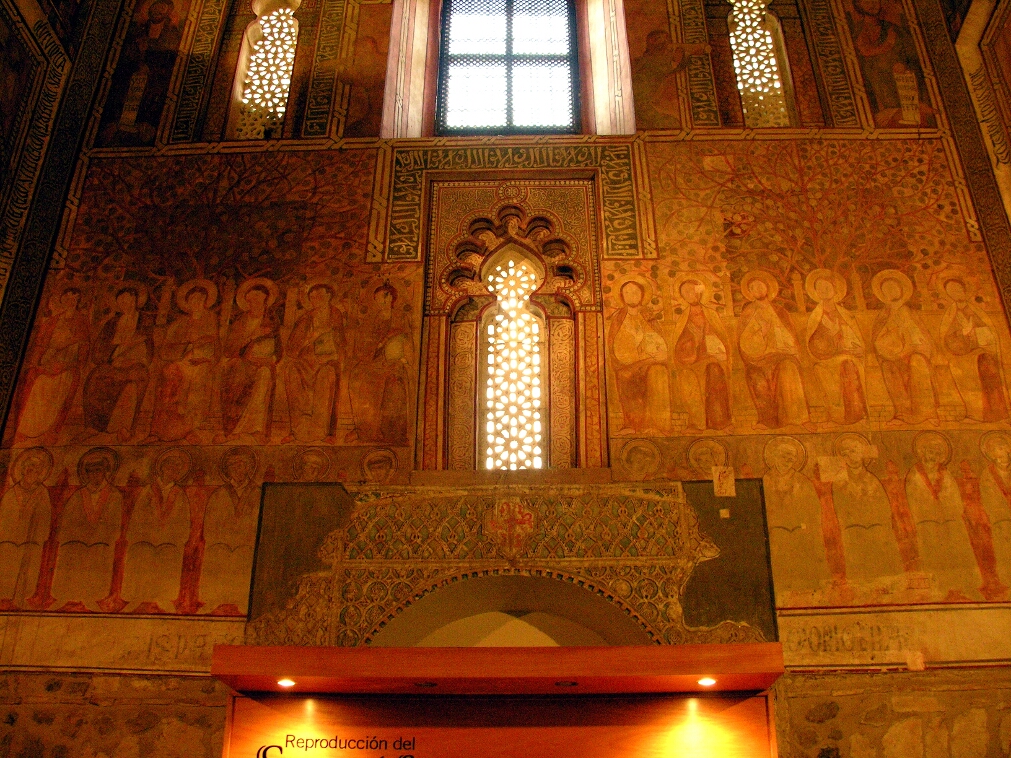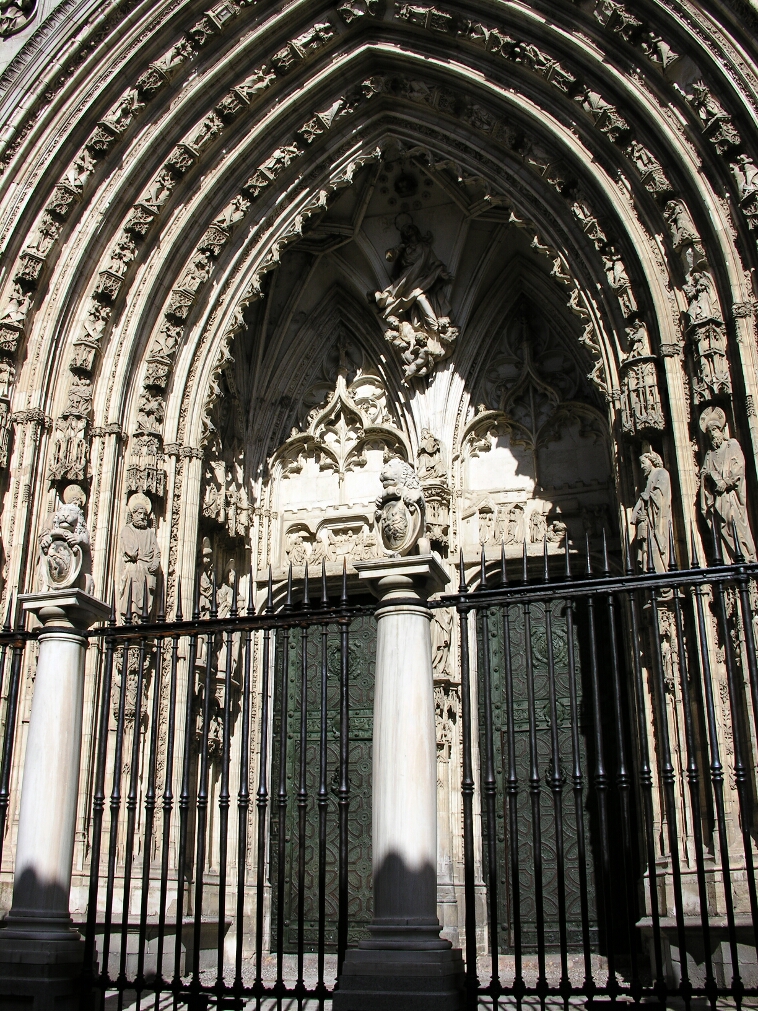
More promising, but still closed!
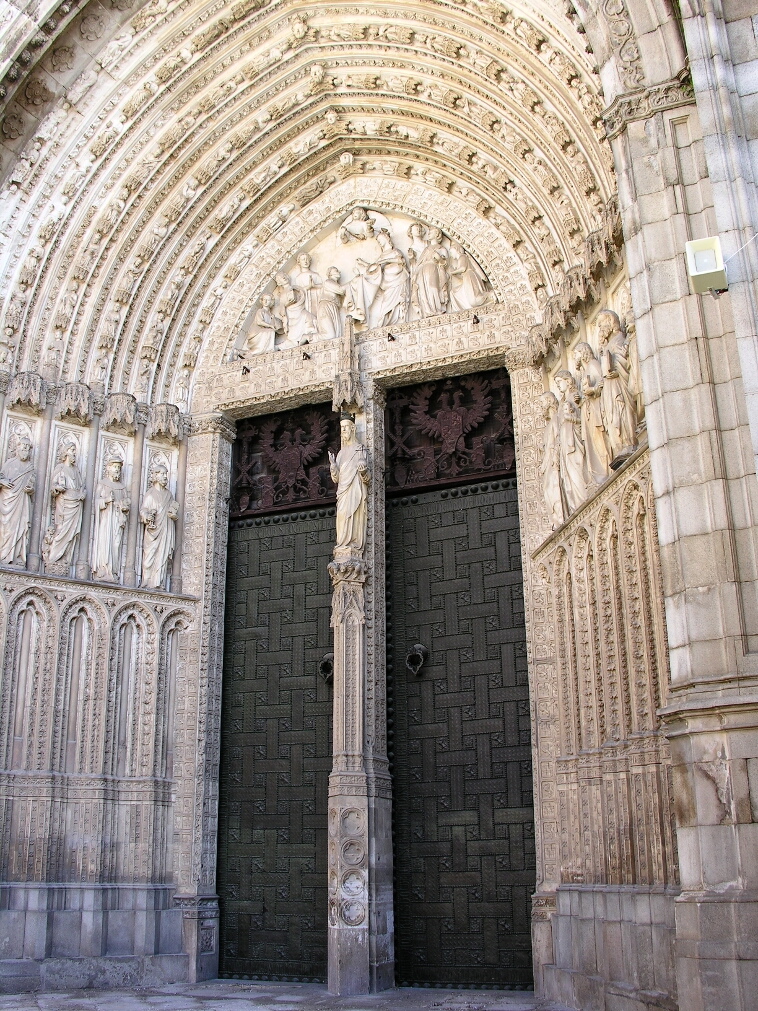
You can't get in from the Plaza Mayor, either
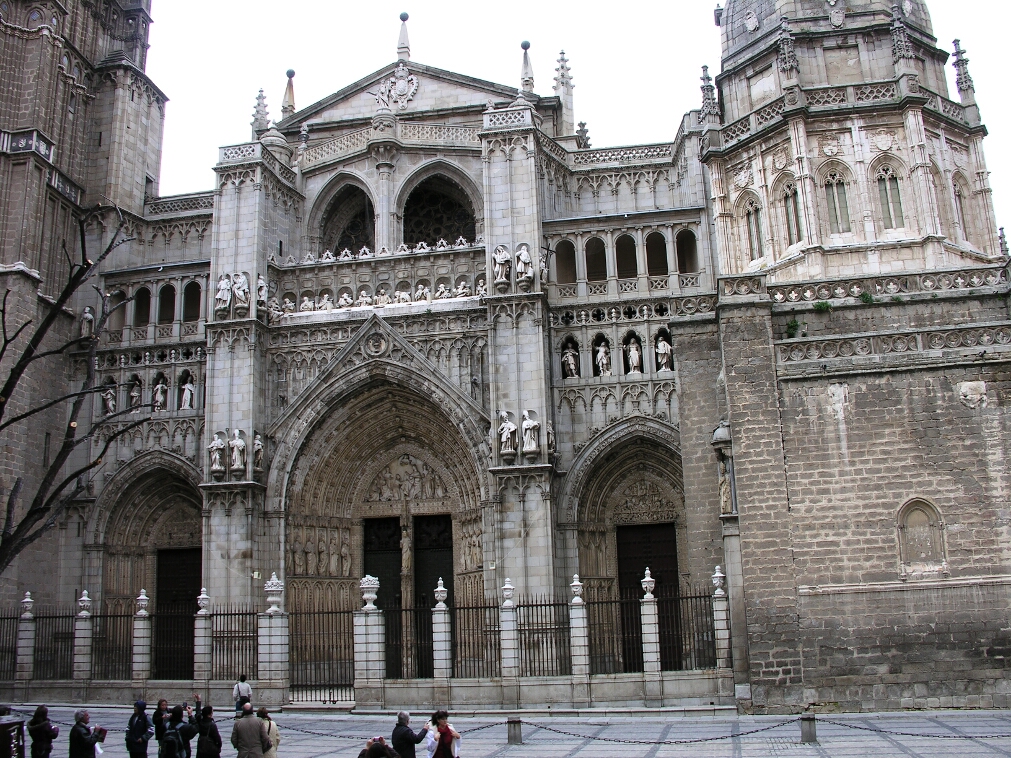
Everywhere you go in the City (here, near the Alcázar), the spire looms.
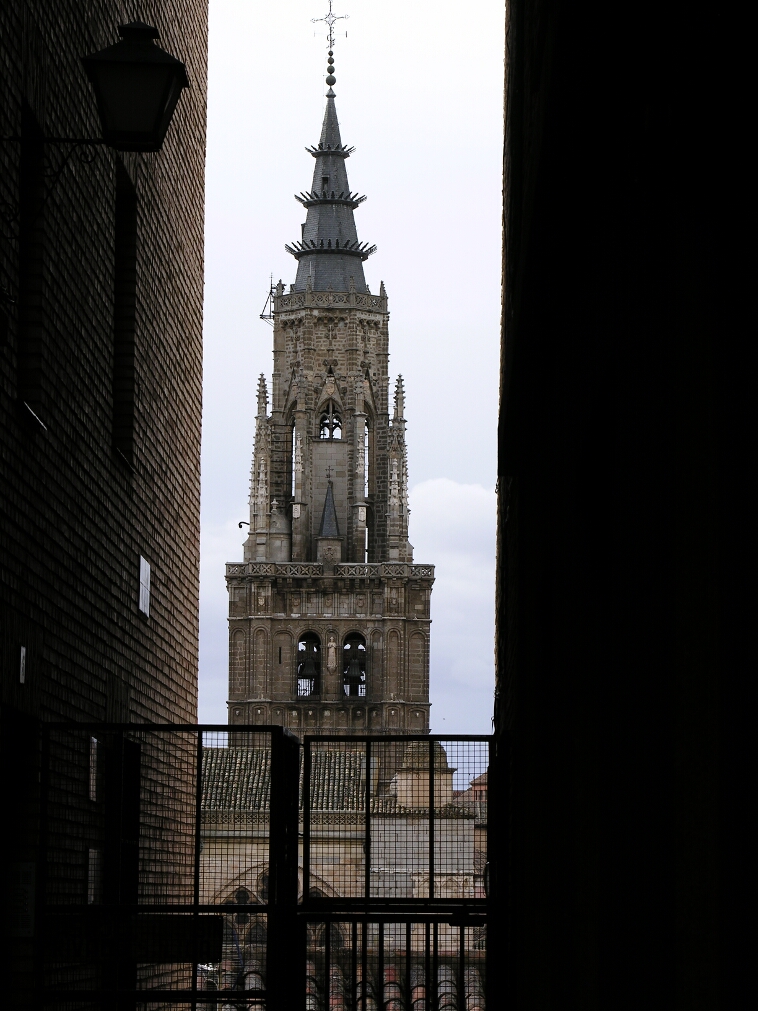
Even here, from the tower of the Jesuit church (San Ildefonso).
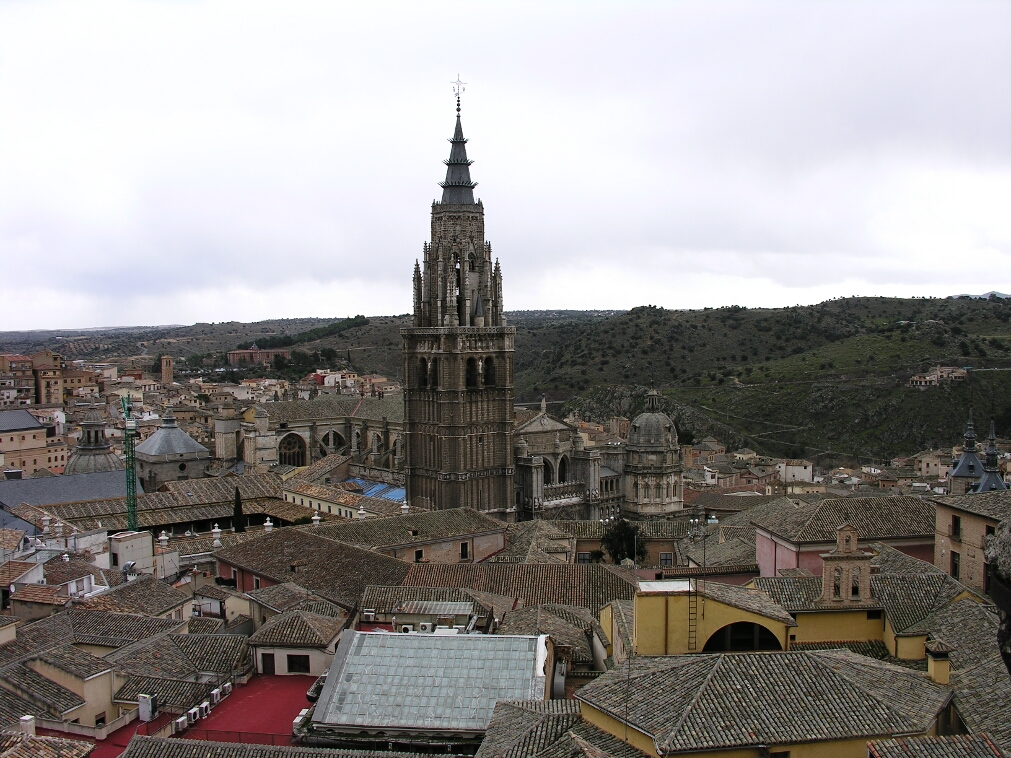
Last stage on our homebound trip was Toledo. The photos have to start with the cathedral. All on the outside :-(, as there are too many plain-clothes busybodies inside enforcing the ban on photography
No Entry!

More promising, but still closed!

You can't get in from the Plaza Mayor, either

Everywhere you go in the City (here, near the Alcázar), the spire looms.

Even here, from the tower of the Jesuit church (San Ildefonso).

The Mezquita del Cristo de la Luz was a Visigothic church, then a
Mosque, then a Church again. The Nave is authentic Arab.
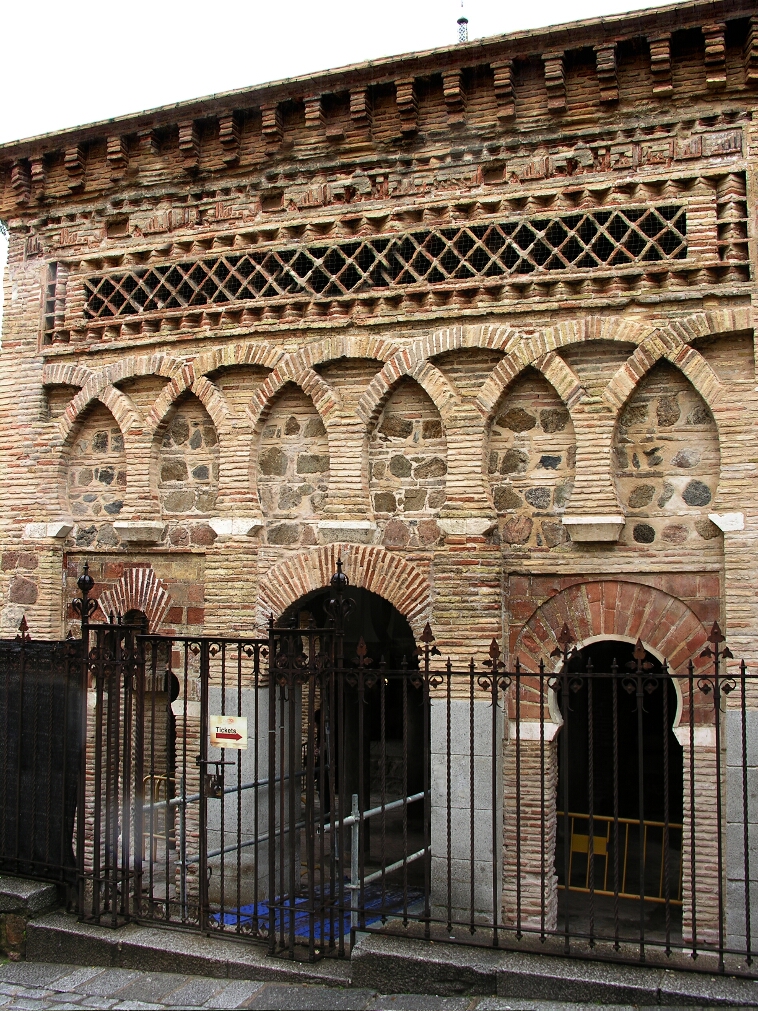
The apse (some consider it the earliest example of Mudéjar art) was added
after the Reconquista arrived in 1085.
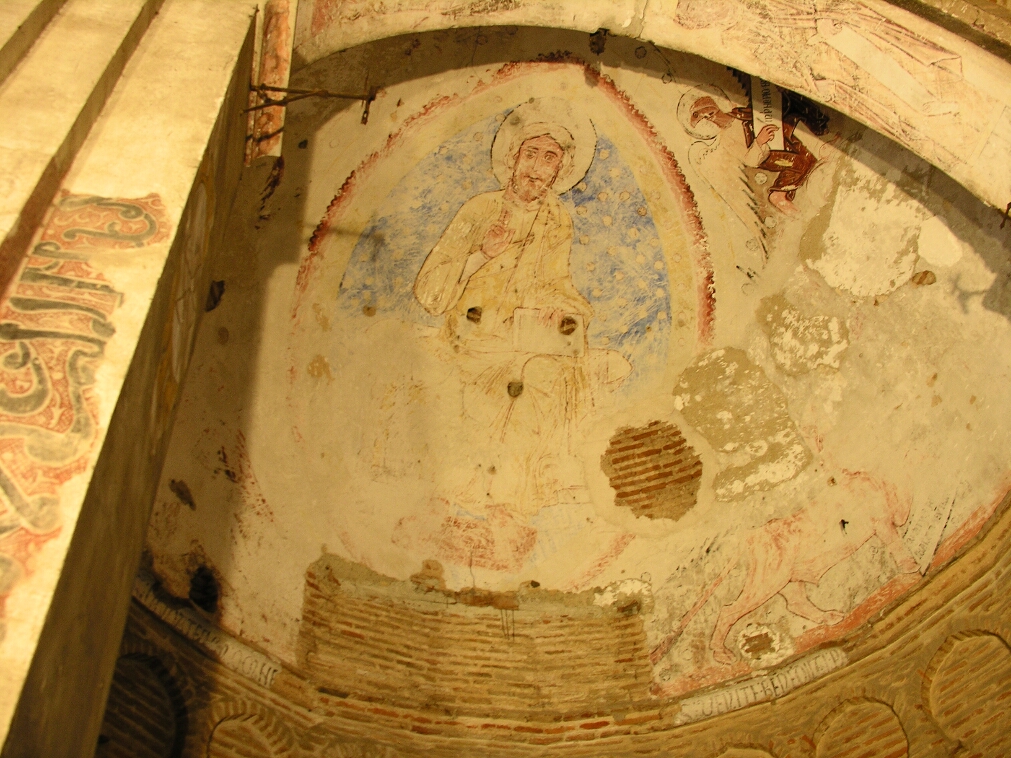
This is the back of the Puerta del Sol, seen from the Mosque. In
the background, you can see the Puerta Nueva del Bisagra.
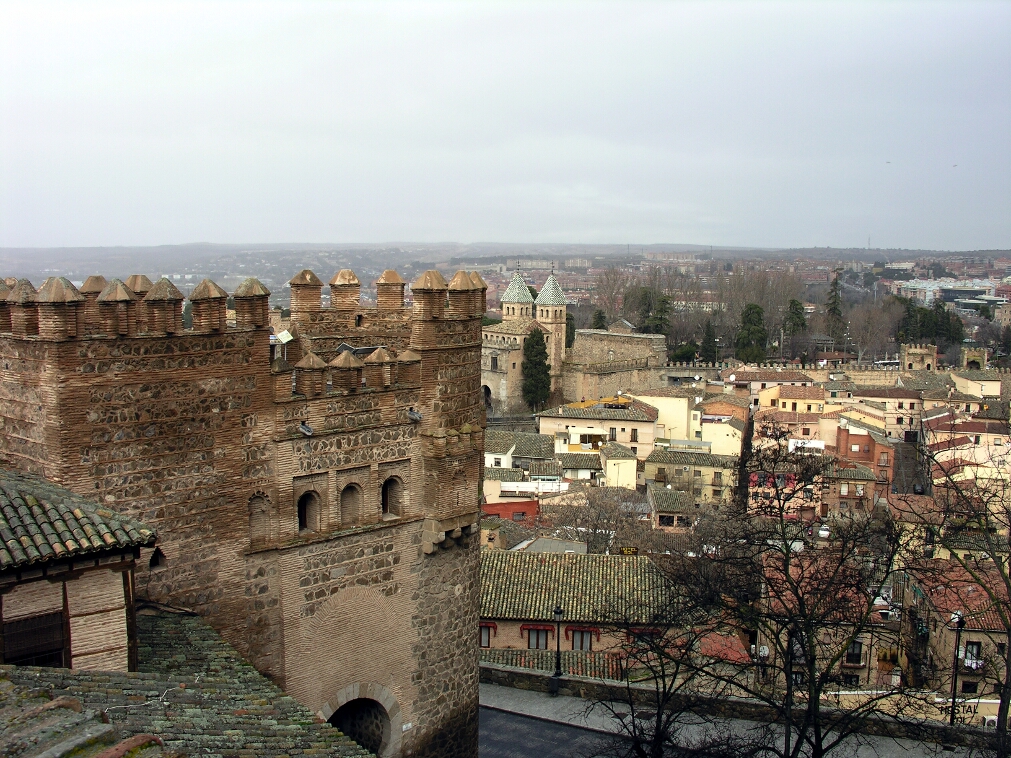
Here is is the inside face of the new Bisagra gate (enlarged by Carlos V, who
else?), and the apse of Santiago del Arrabal.
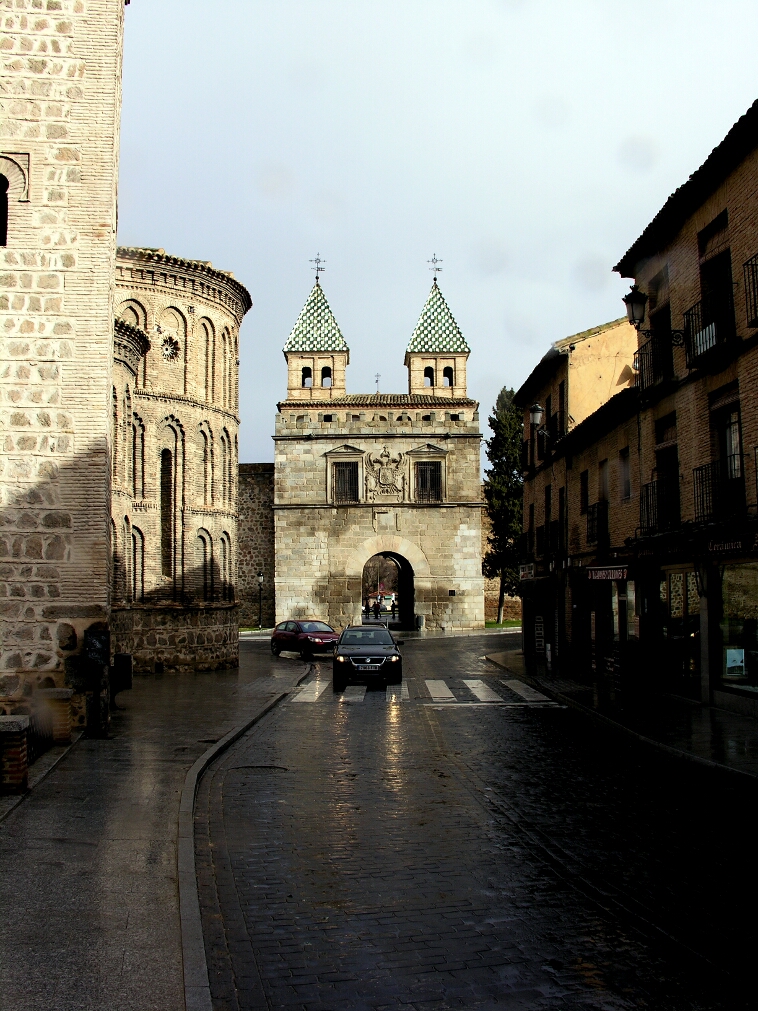
And here the business end of the gate, somewhat less fearsome because of the
traffic friendly gaps in the ramparts on each side.
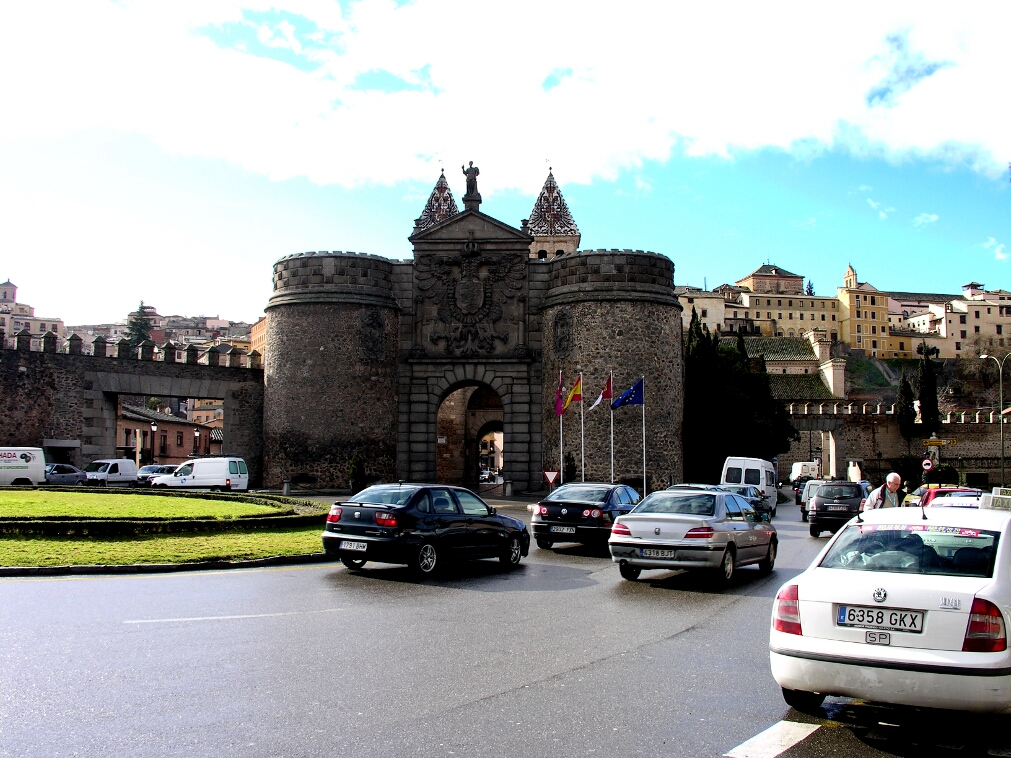
And here, coming back from the Hospital de Tavera, is the front face
of the Puerta del Sol.
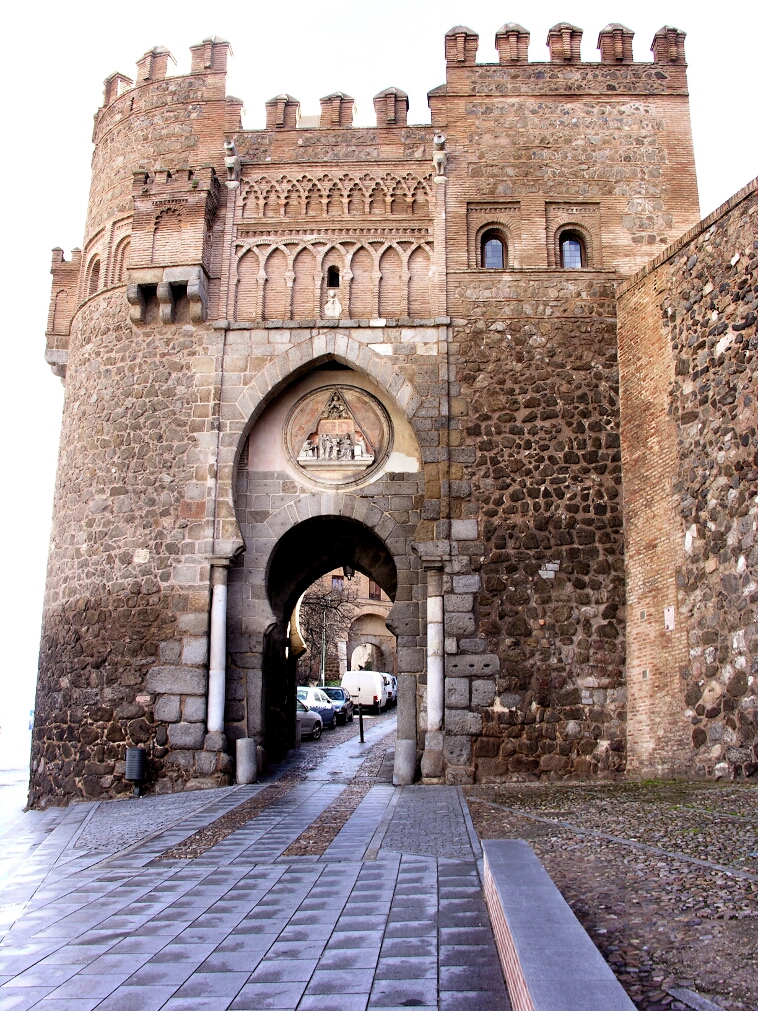
Lastly, here is the New Bisagra, as seen from the blacony of our hotel room.
The church on the right hand side of the two green towers is Santiago
again.
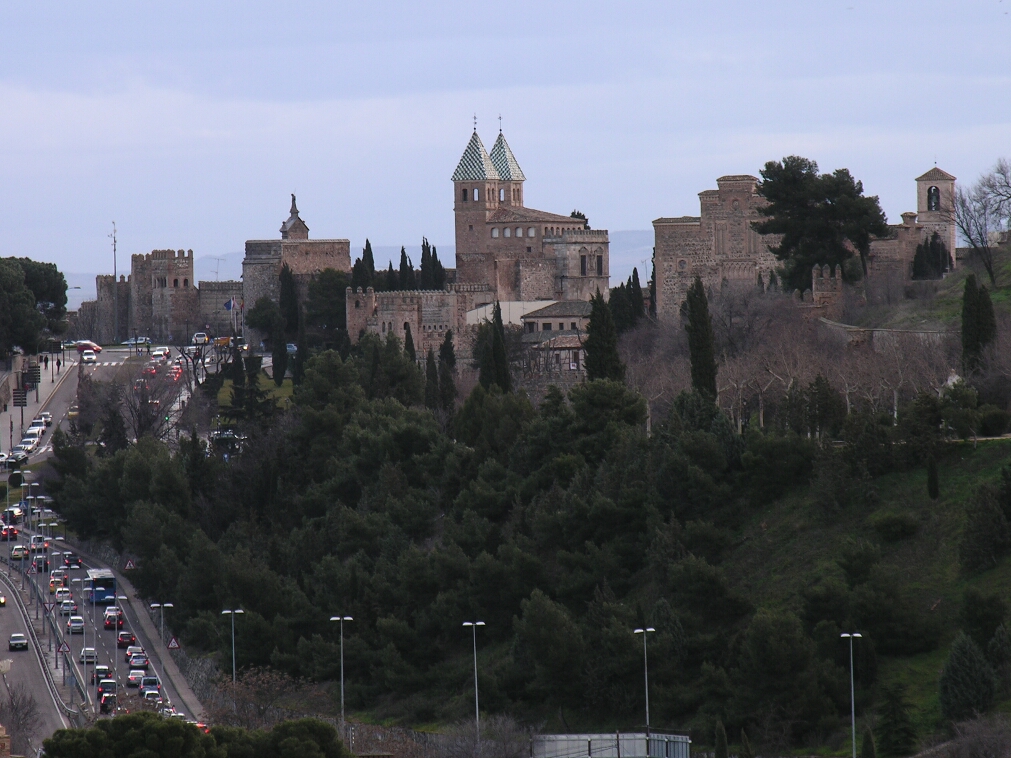
Speaking of hotel, here is the entrance. It looks like a small
house, as it probably originally was. Cigarrales were little country
gentilhommières on the far side of the Tagus, to which the Toledo
grandees could retreat to hide from the summer heat.
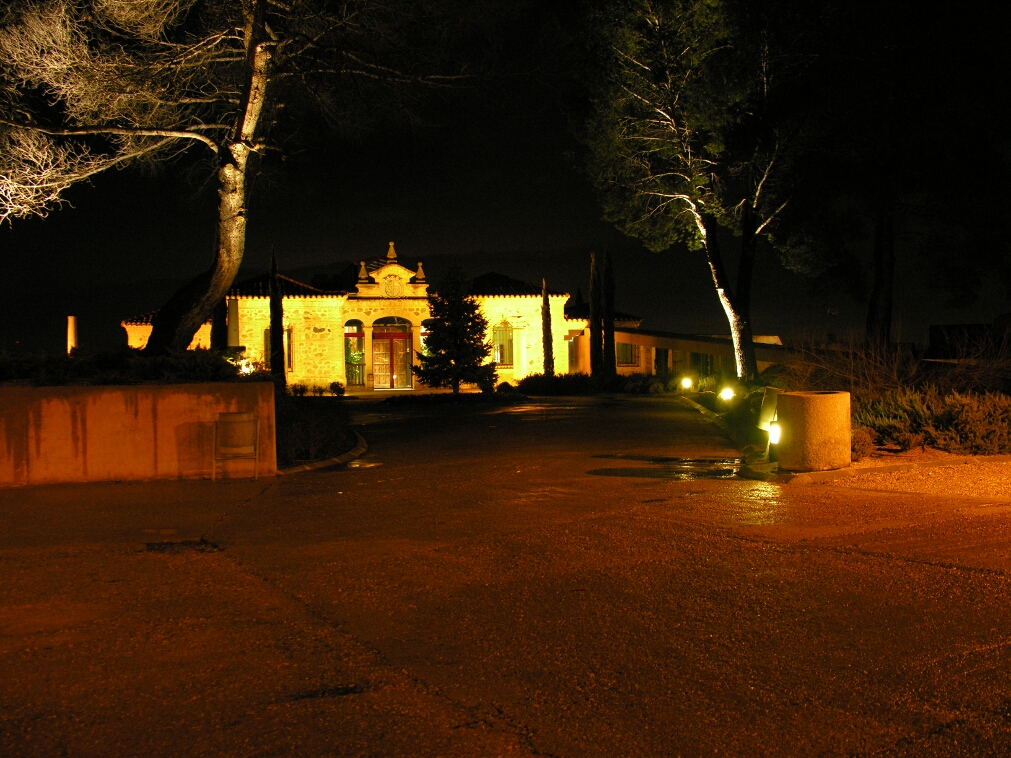
This is what it looked like from the city. It is the pinky-red building in
the centre.
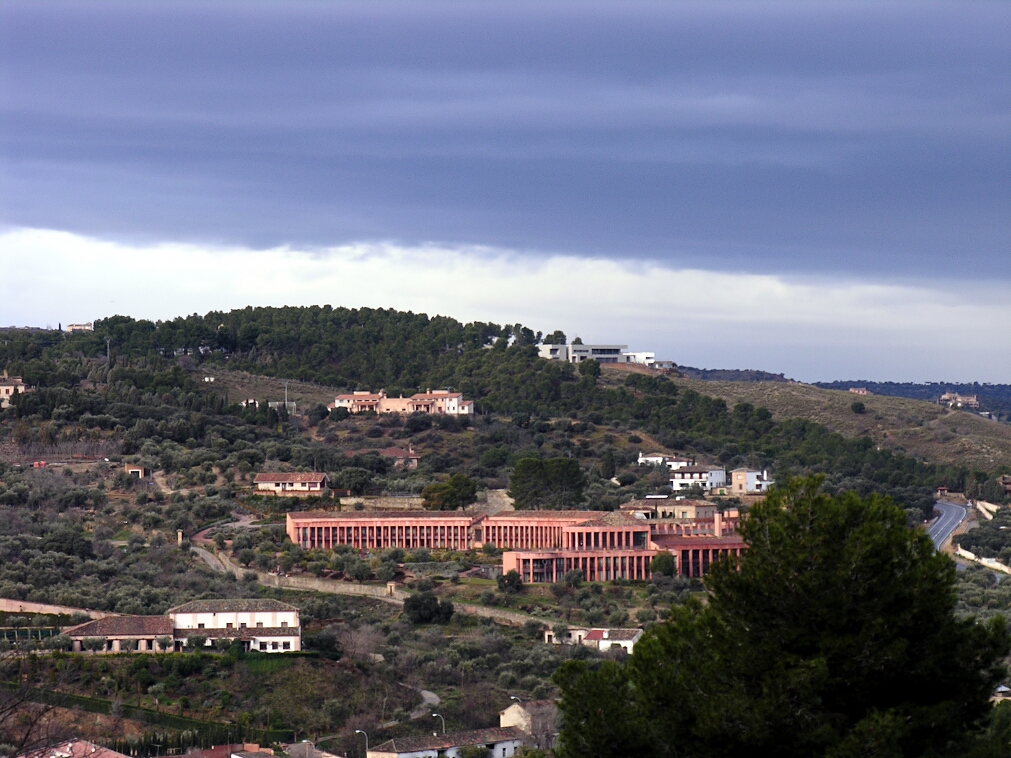
This museum was recommended by our guidebook as having some superb El
Grecos, though after the cathedral I was feeling slightly overfed. It does
have a beautiful patio, and a staircase by Covarrubias.
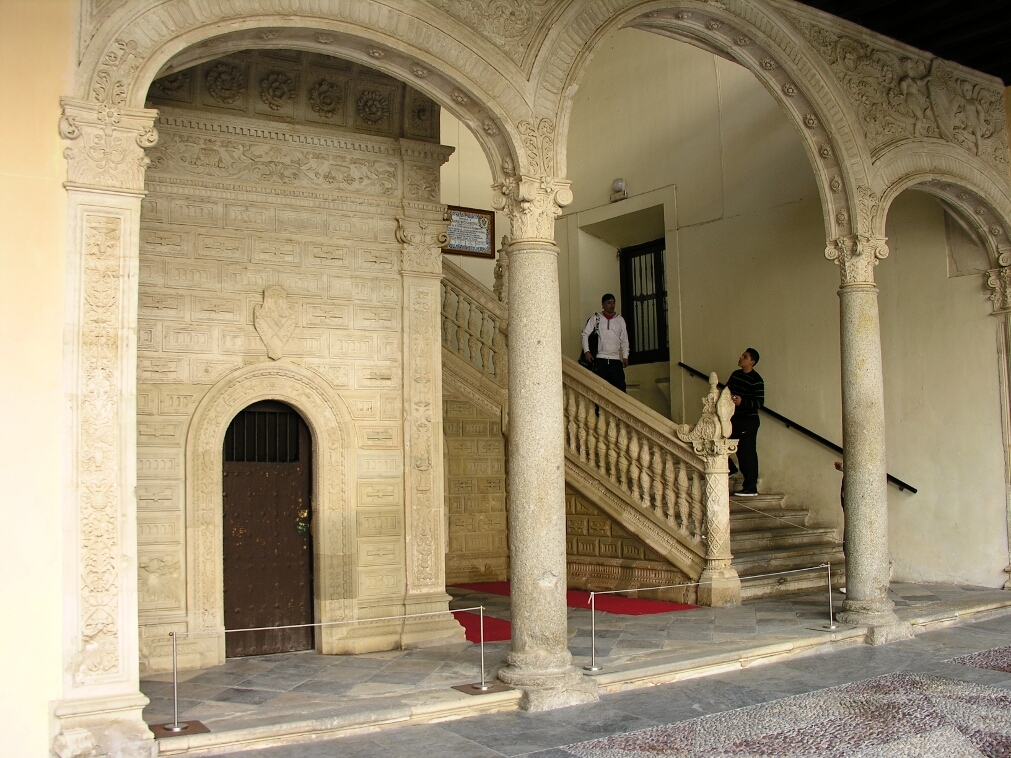
Here is the patio, seen from the first floor arcade.
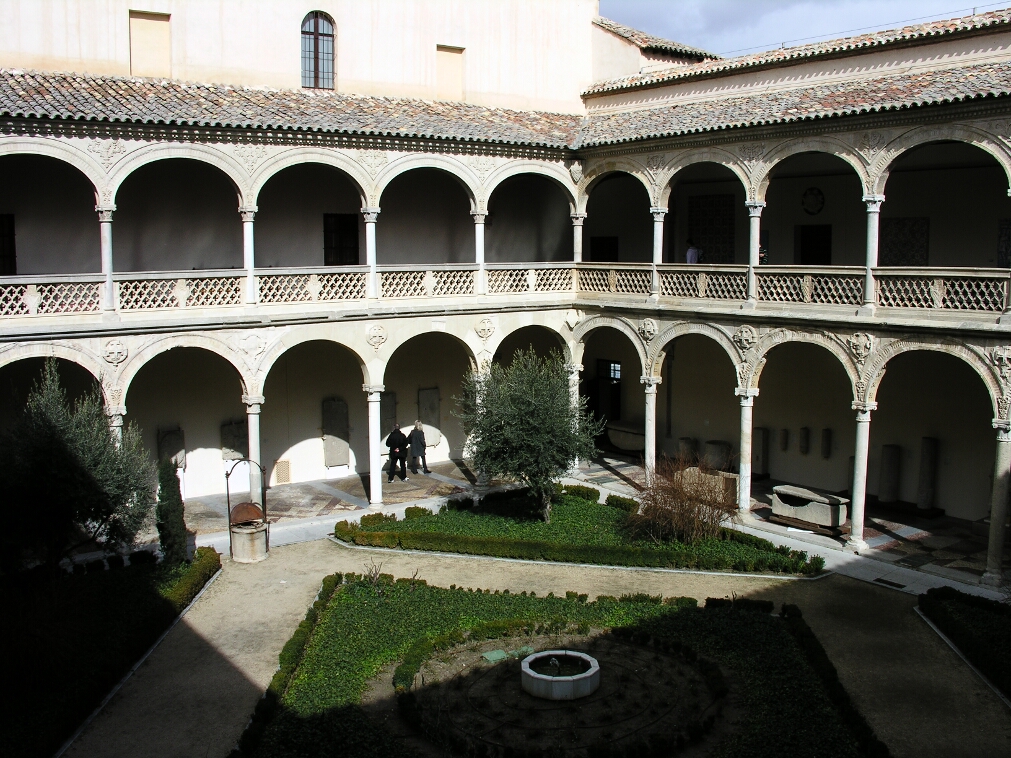
And here is the obligatory mudéjar plaster work.
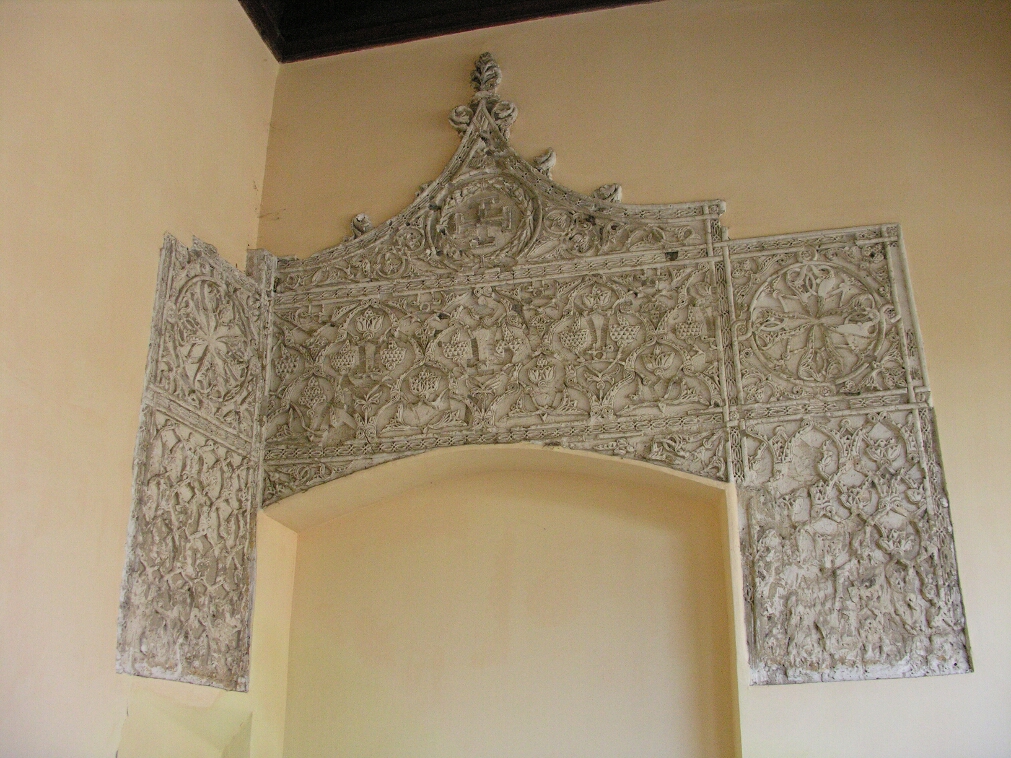
This hospital, now only operating as a museum, contains a fantastic double
patio, designed by Covarrubias.
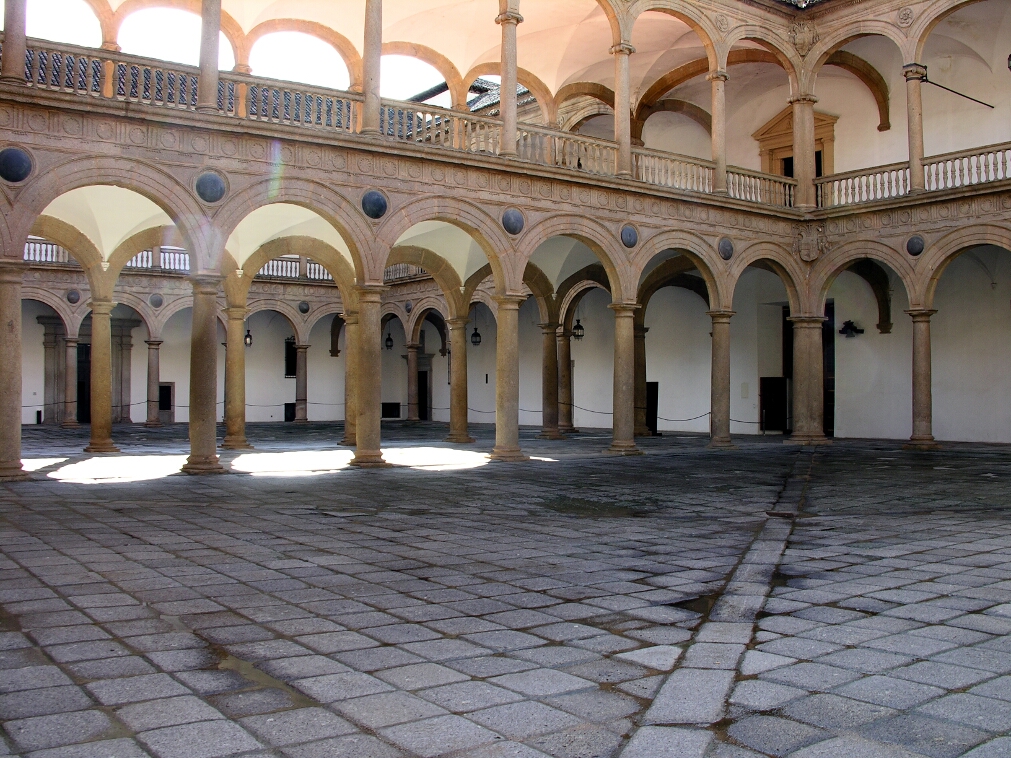
It's so good I took two shots.

It contains many interesting paintings, including the compulsory El Grecos.
But no photos allowed inside :-(.
This church is one of the high points of mudéjar art in the whole
of Spain. There is a theory that the church, commissioned by king Sancho II
of Portugal in the XIIIth Century, stands on the same ground as a former
mosque. The bell-tower is free-standing, as is so common in Italian
Romanesque churches, and this first shot shows how similar the whole building
is to its contemporaries in France and Italy; and at the same time, how
arches and windows have a different style of ornamentation.
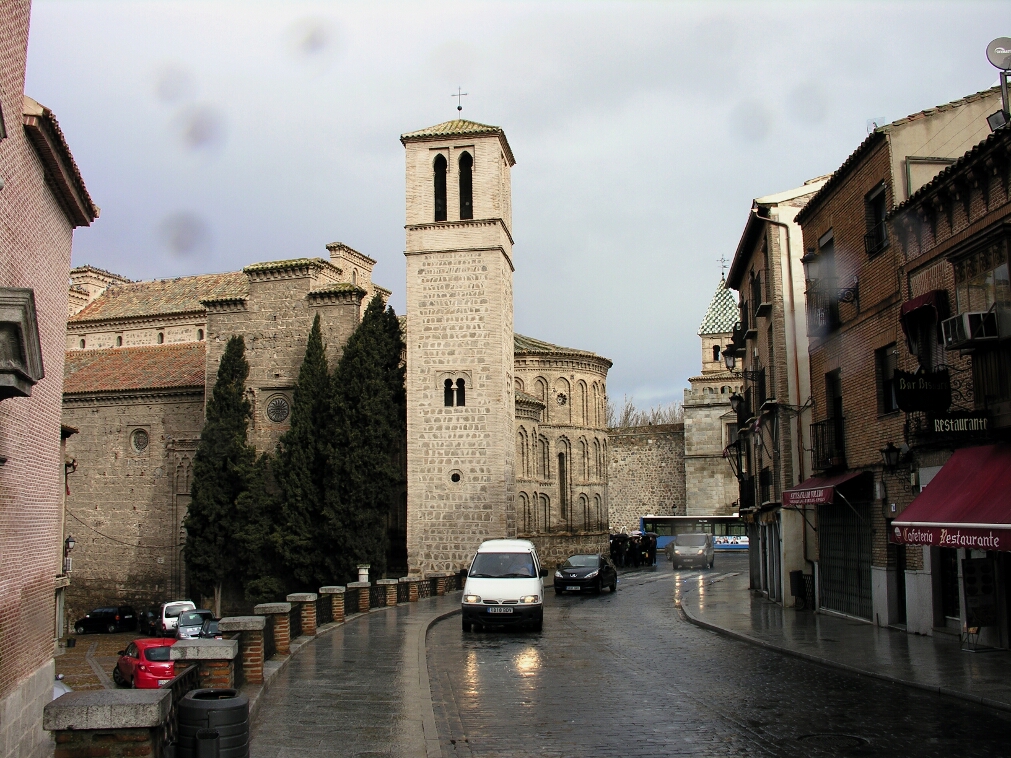
This shot shows the Western facade, where the mudéjar decoration is
most remarkable.
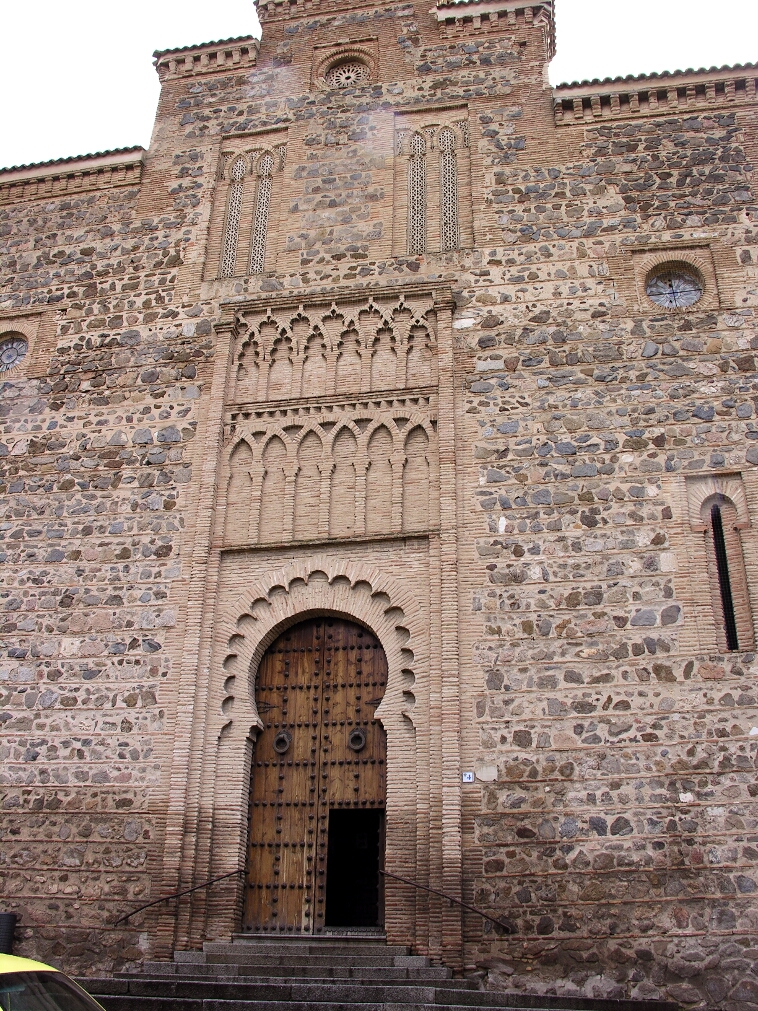
The interior is most definitely untypical for Spain. It is very plain.
I liked it enormously, and was annoyed that there was the usual ban on
cameras.
This was the first church we saw when we entered Toledo. On the outside
walls hang chains, which some say were worn by Christian prisoners in Granada
prior to the surrender in 1492. It was originally a Francisan house, and has
some impressive mudéjar ceilings in its cloister:
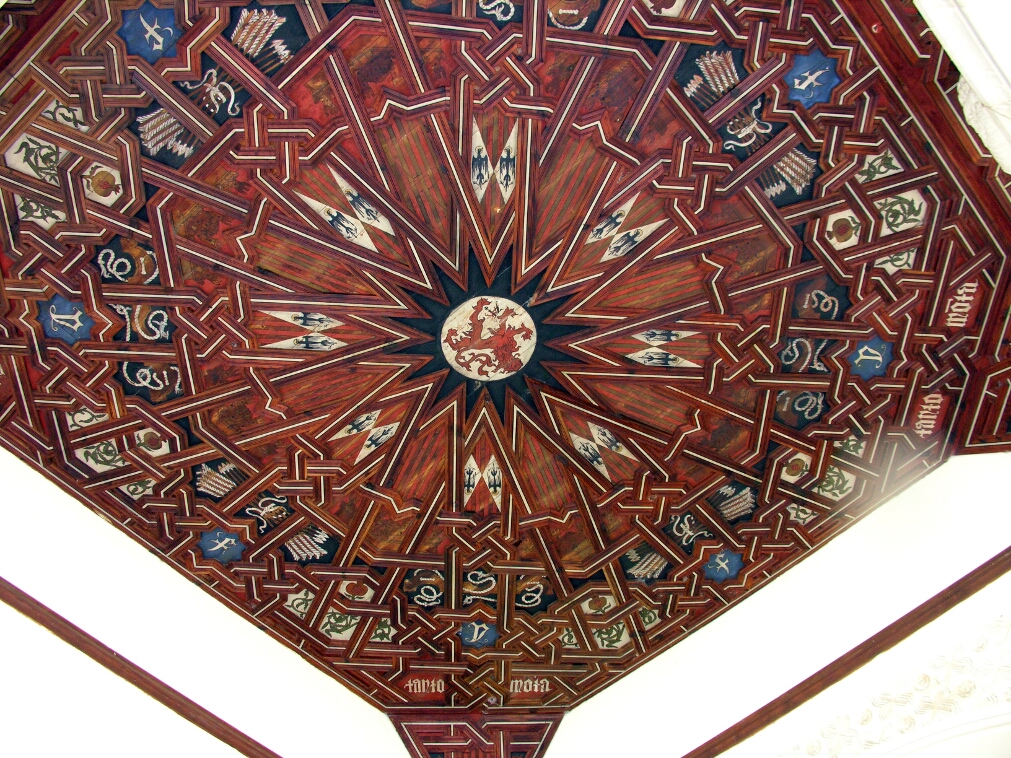
Although the style of ceiling décor is mudéjar, the propaganda is
bang up to date. The house's founders were Ferdinand and Isabella, and their
arms are united in the patterns here. Also their motto "Tanto monta, monta
tanto", one half of which is carved into each side of the arches on this
level. The complex was designed by a Breton architect, Juan Guas, born in San
Pol de Léon. This is the ornate cloister, seen from the upper storey. You
can see that it was raining quite hard from the waterfalls in the right
foreground:
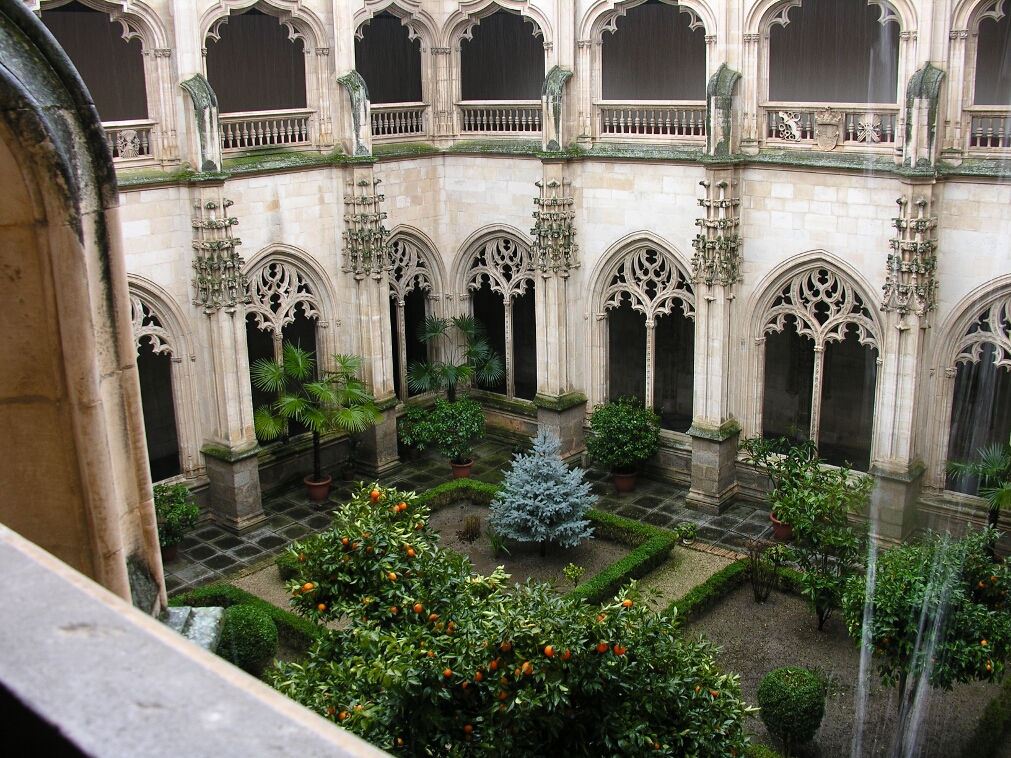
Here the ornate stonework around the top of the cloister:
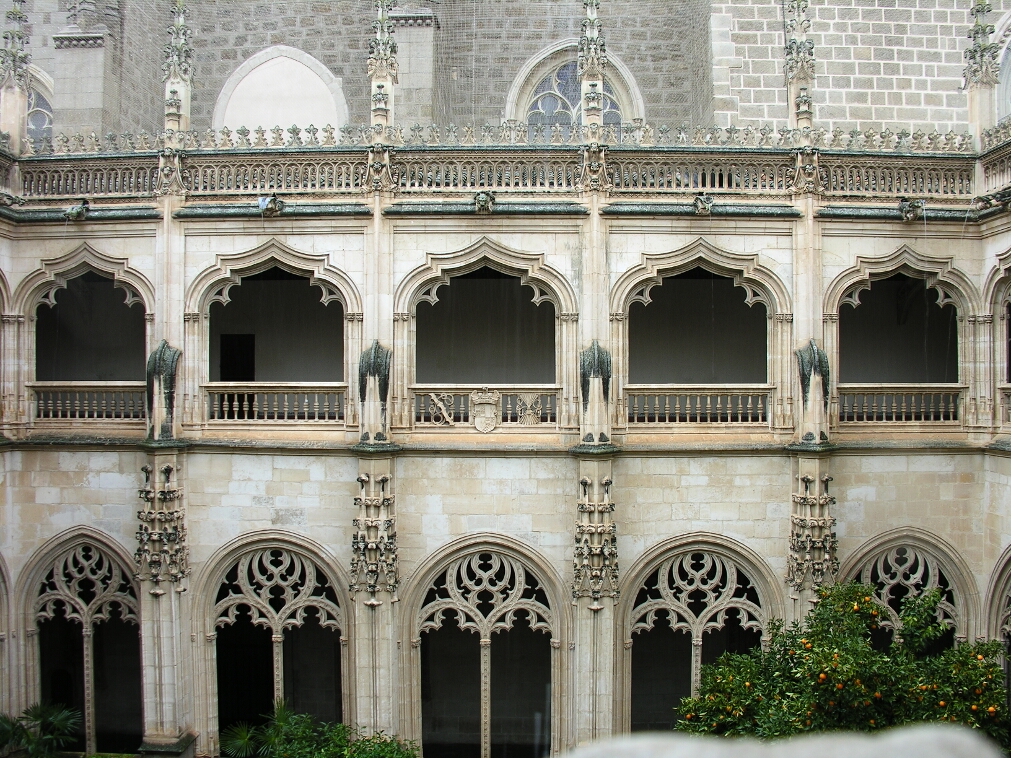
Even here, in this temple of Isabelline Gothic, a leftover piece of
mudéjar ceramic

The body of the church was pure flamboyant
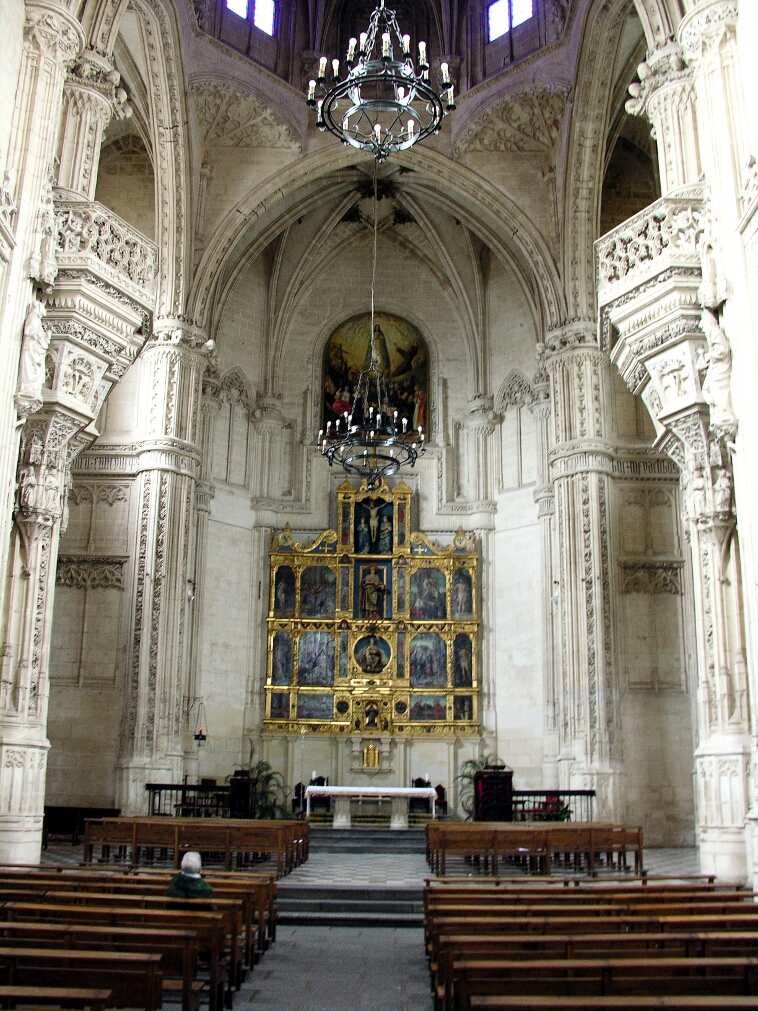
Here are the combined arms of Ferdinand and Isabella, who had been expecting
to be buried here until the capture of Granada.
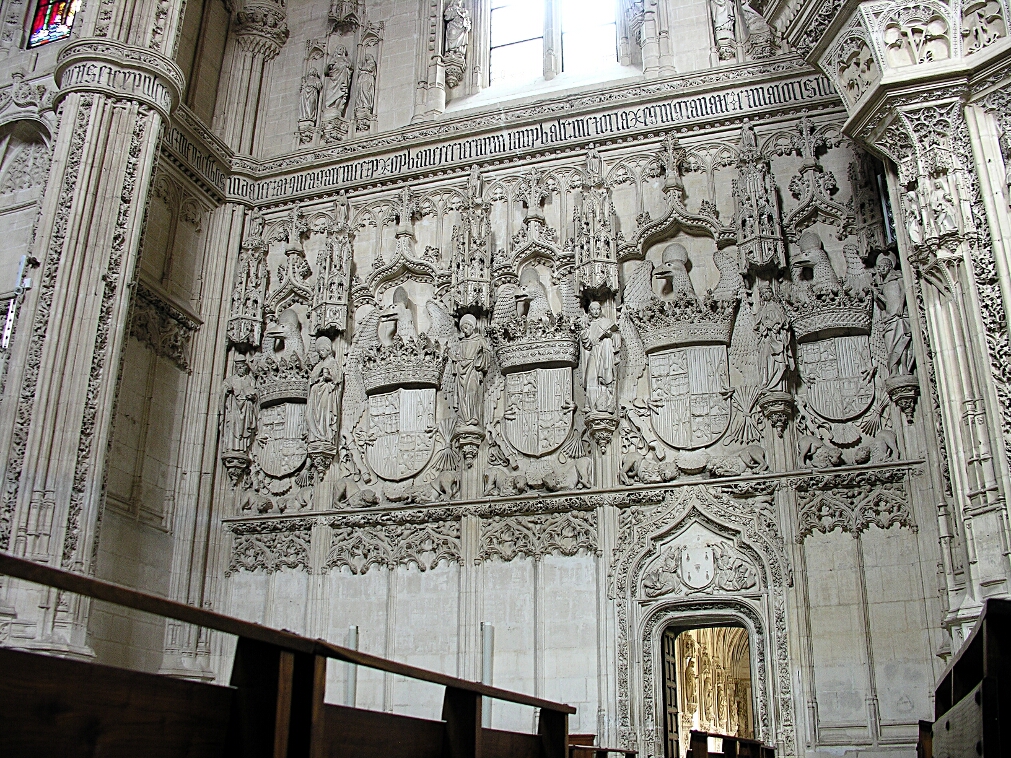
And here a detail of the capitals at the intersection of the nave and
transepts.
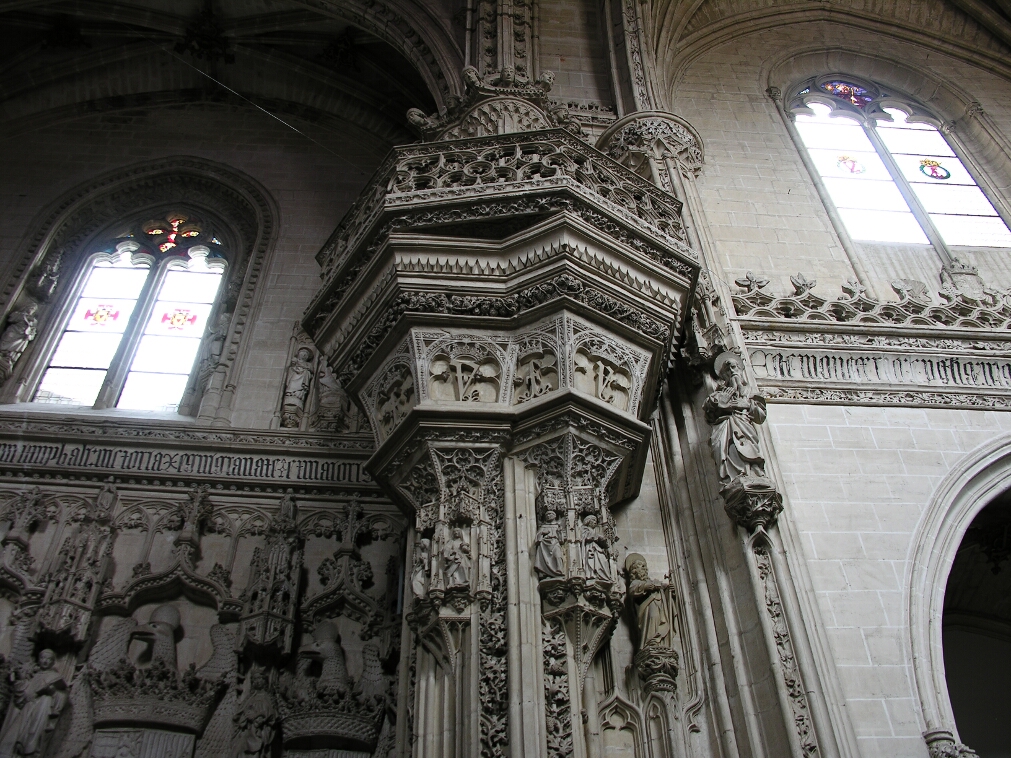
This was my opportunity to do with a camera what El Greco had done with a paintbrush, and I wasn't going to miss out.
Here the Toledo skyline from our hotel window, much as EG would have seen
it, apart from the cranes.
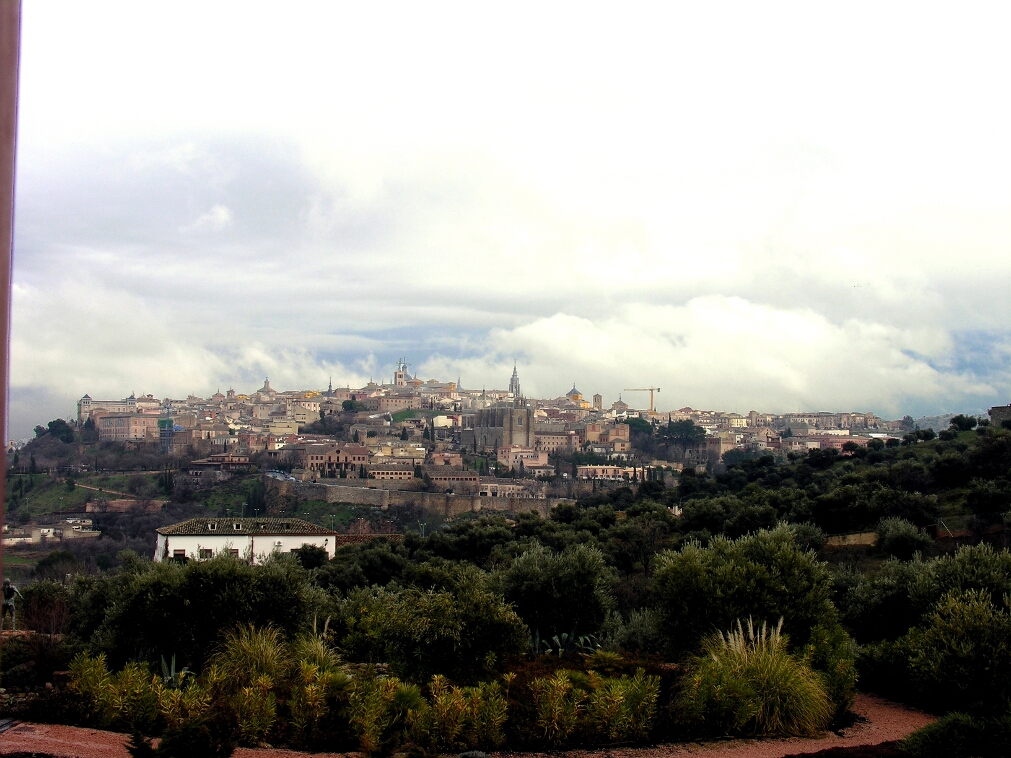
The church floodlit in the right foreground - I took this shot down by St
Martin's bridge - is San Juan de los Reyes. The building to the left,
above the statue, is the seat of the Provincial government.
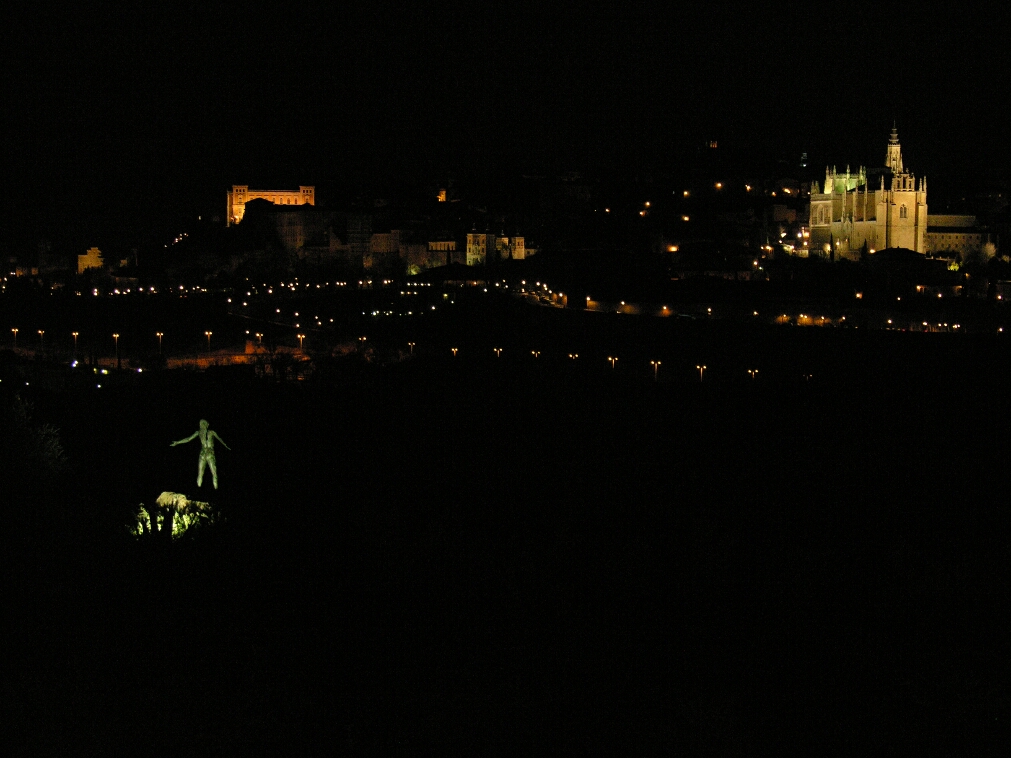
This is the St Martin bridge, with what I hope are suitably Grecoesque
limelight and threatening sky
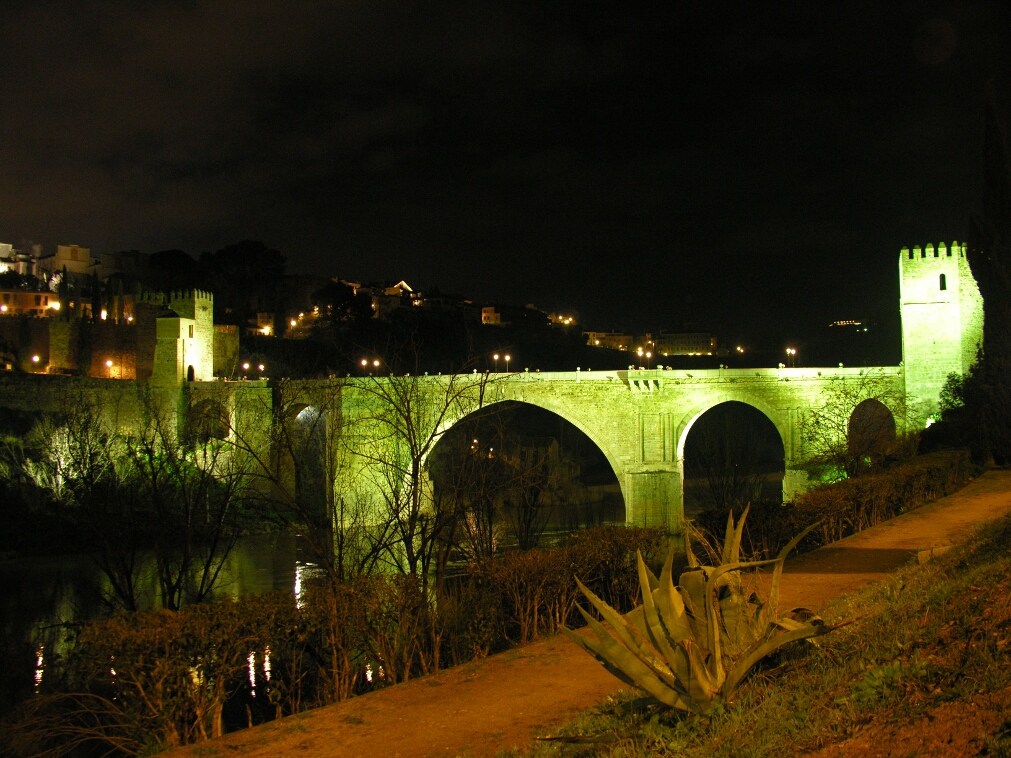
We drove up into the hills near the Parador - there was a compulsory
detour - to get this picture, with St Luke floodlit in the centre foreground,
the cathedral and the Alcázar in the middle ground.
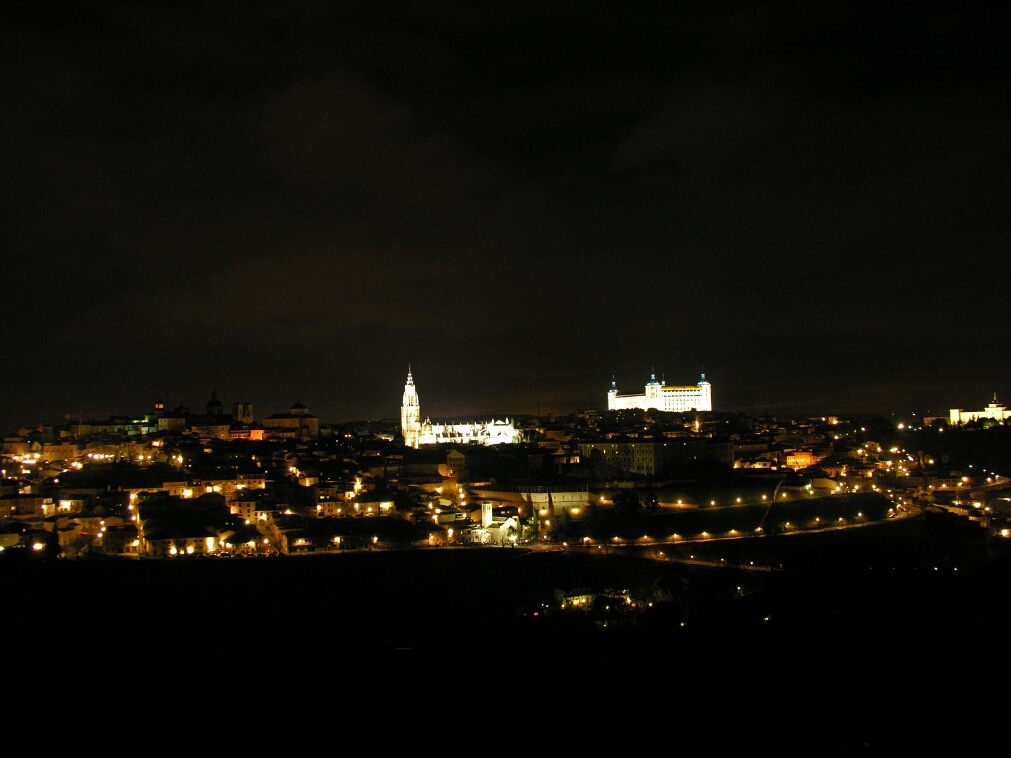
The Alcántara bridge has been here since Roman times.
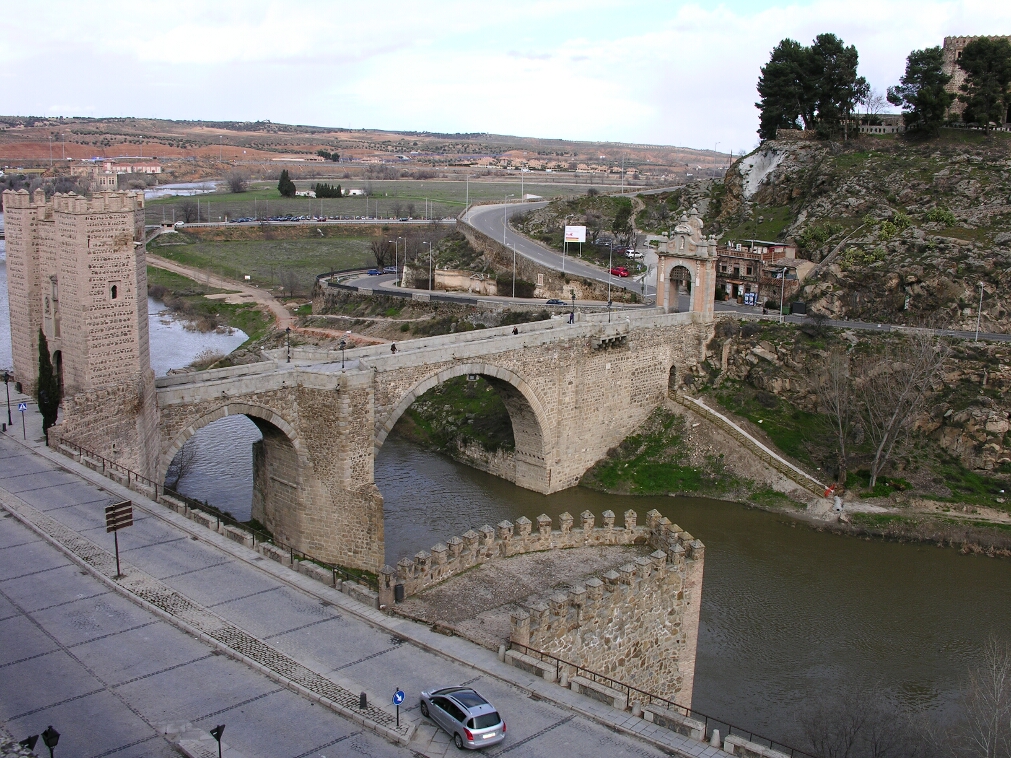
The castle here is now an hotel - Castillo San Servando
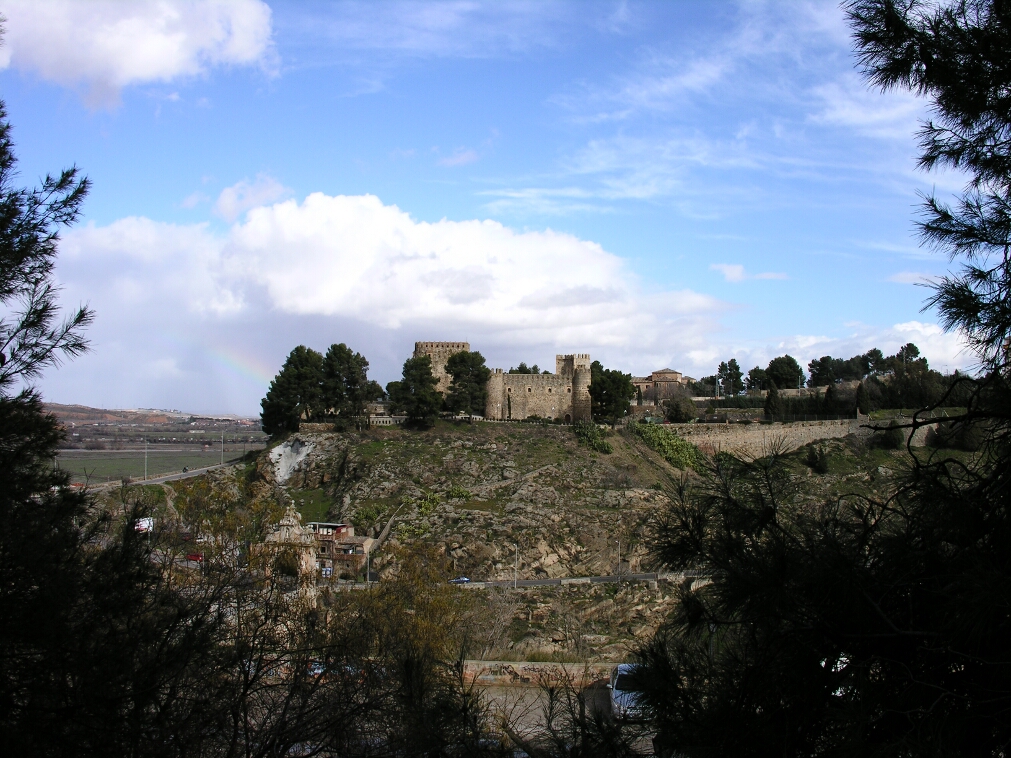
Lastly, here is an early morning view of the city from our room
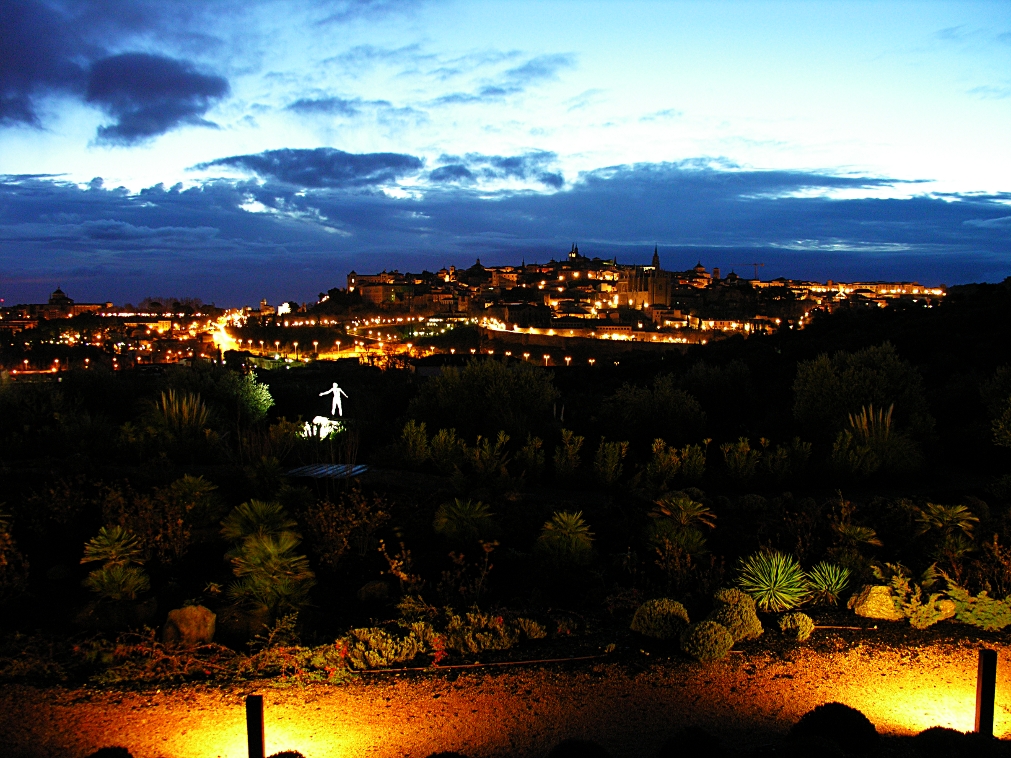
A pleasant Romanesque church, down by the ramparts.
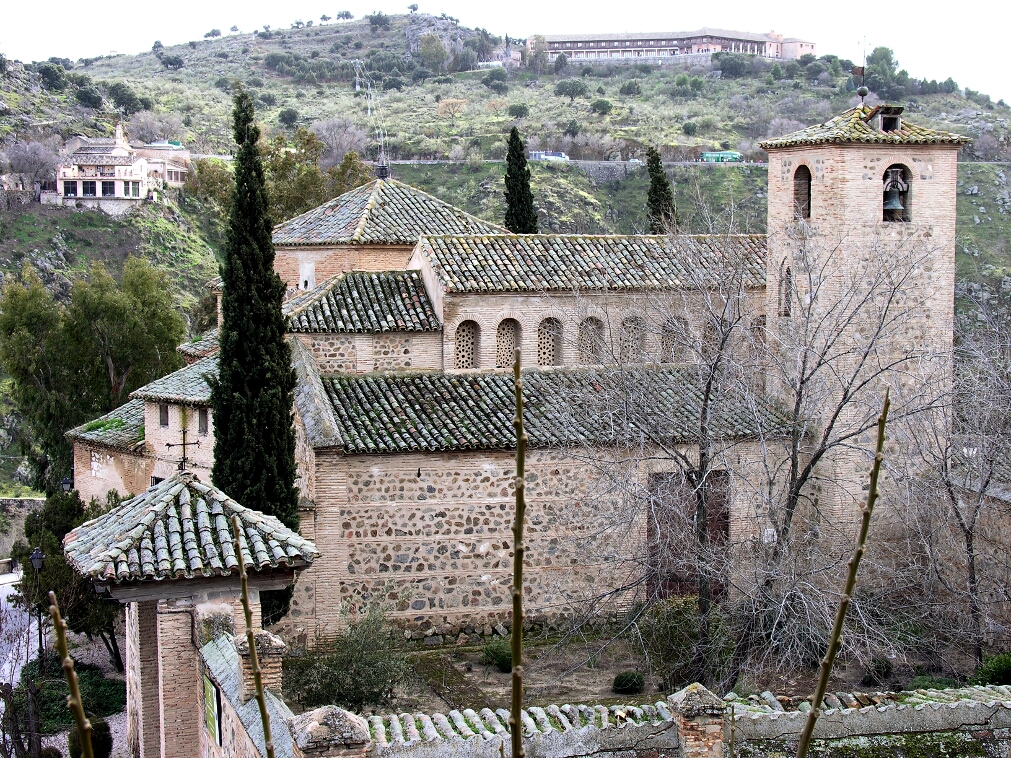
This an oddly named synagogue! The history is that it was built, in the Almohad style, as the Ibn Shushan Synagogue. It became a church in the early 15th Century. It is therefore one of the three remaining medieval synagogues from the time of mutual tolerance. Outside, it is nothing much to look at. Inside the horseshoe arches have capitals showing pine cones and other strange fruit.
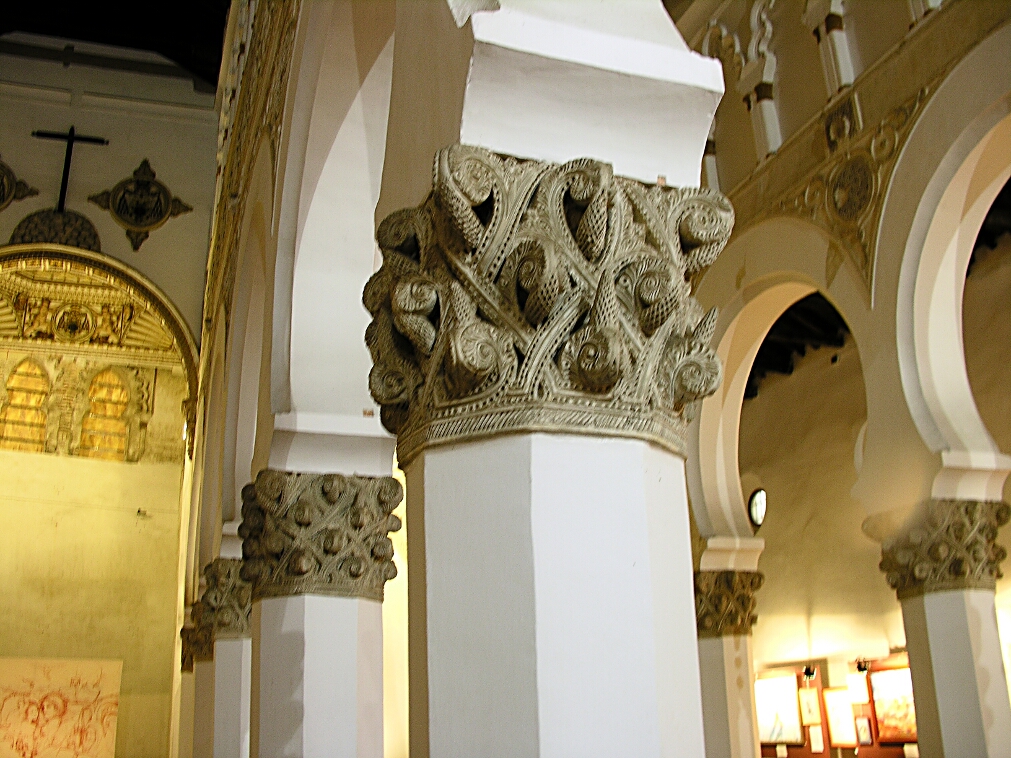
As Islamic as the decoration looks, there are still specifically Judaic
motifs, such as the star of David in this moulding
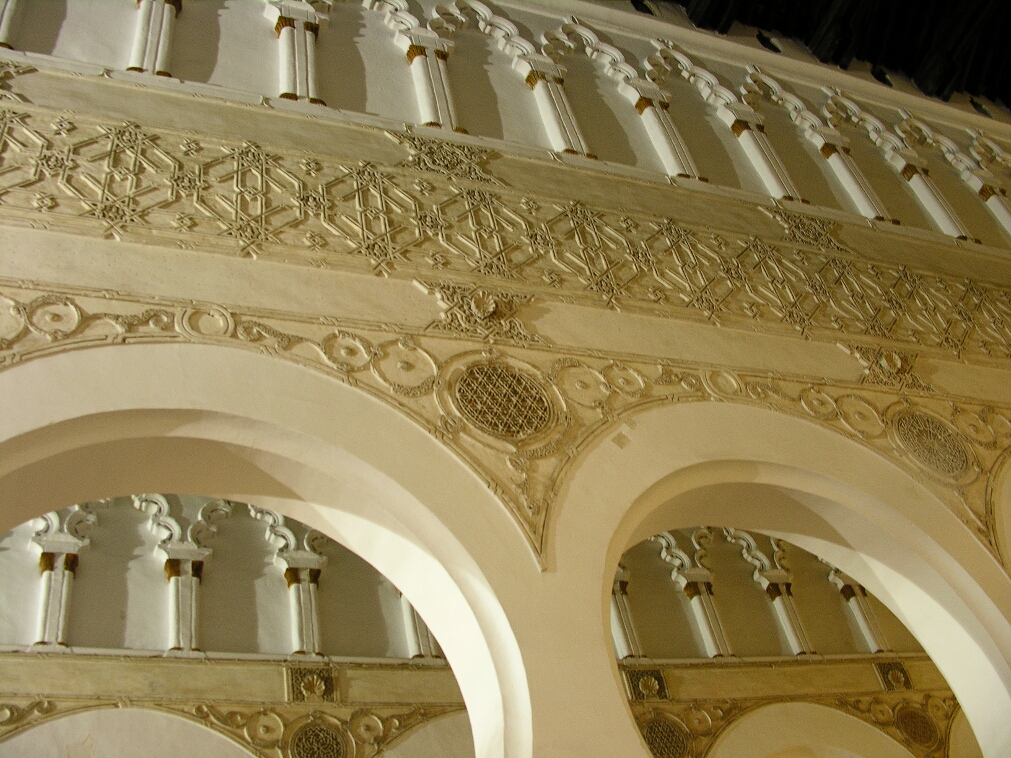
The first half-timbered house we had seen in Spain. The bust is that of
Marañon, whose essays I for some reason remember from school.
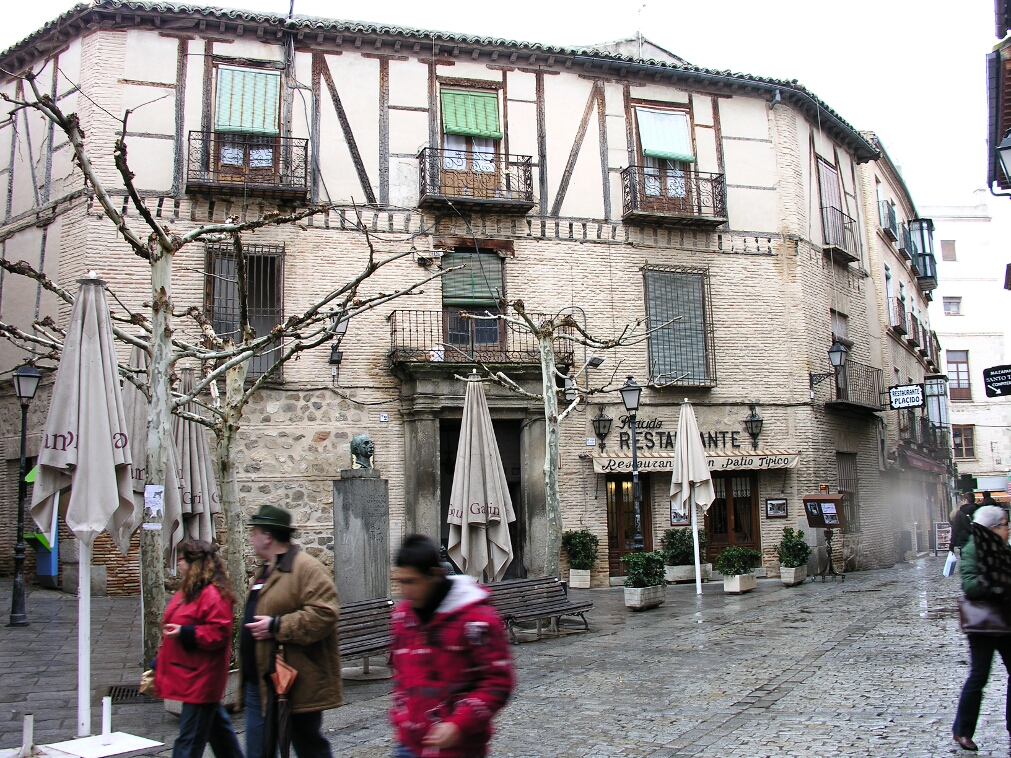
This is the facade of St Leocadia's church. I had heard of people being
called Leocadie in France, but only in novels. Apparently, Saint Leocadia was
a local girl, martyred under Diocletian, at the beginning of the 4th Century.
As early as the beginning of the Seventh century, she had a church in
Toledo.
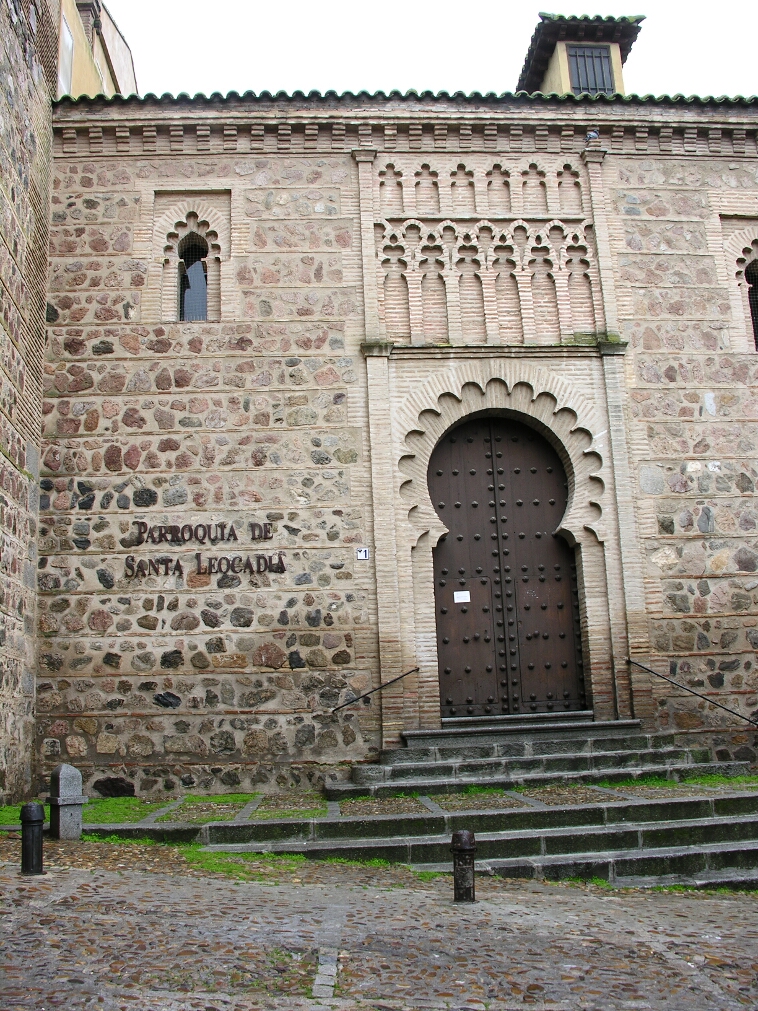
Many of the streets in the centre of Toledo are too narrow and too stepped
for any but pedestrian traffic.
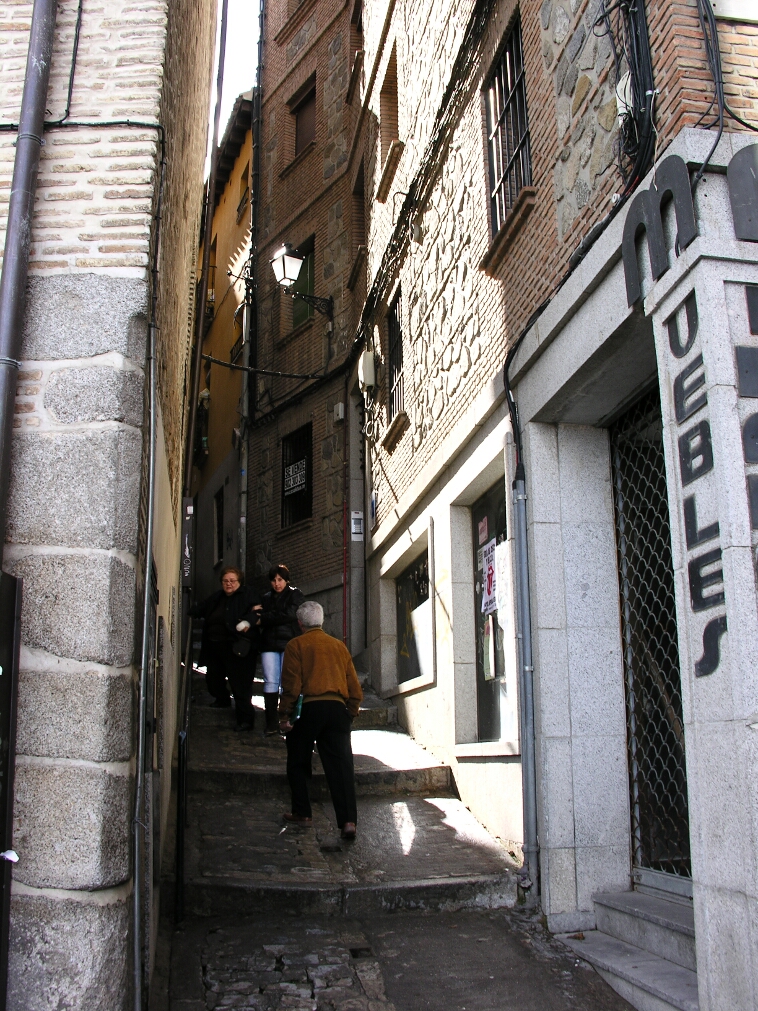
Even the ones wide enough for cars often have no pavement. Quite difficult to
walk safely along the Calle Nuñez de Arce which was once lined with
grand houses.
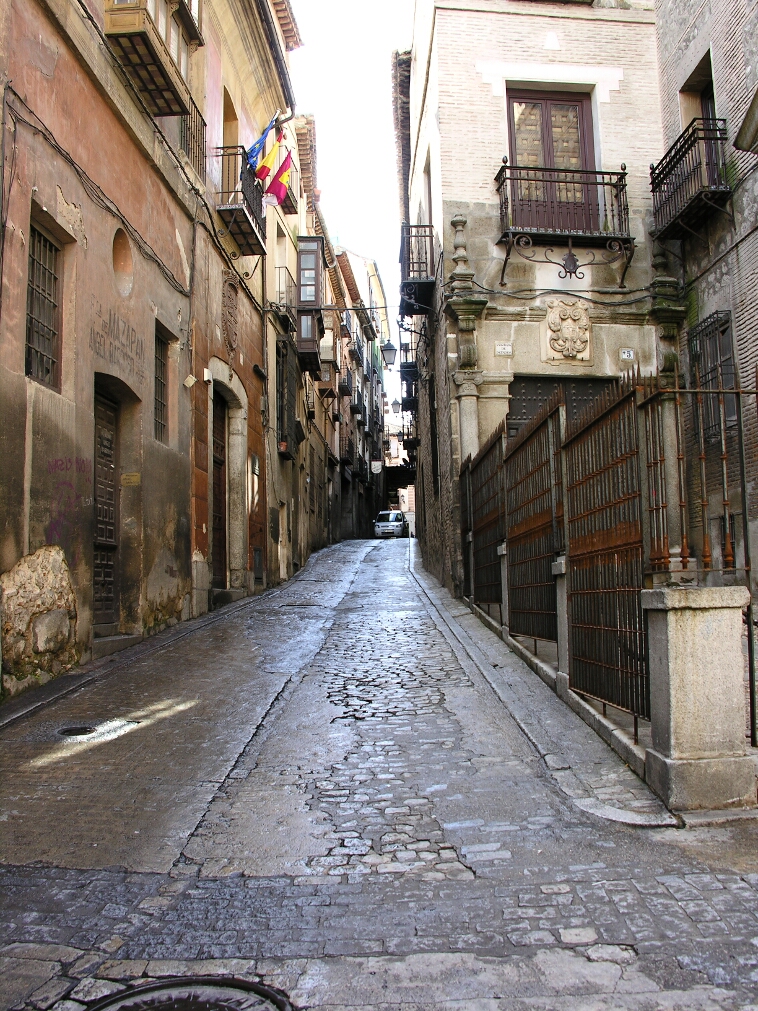
Houses that have seen better days; here beside what I think - the rain washed
my street map of Toledo to pieces - is Saint Nicholas' church
. 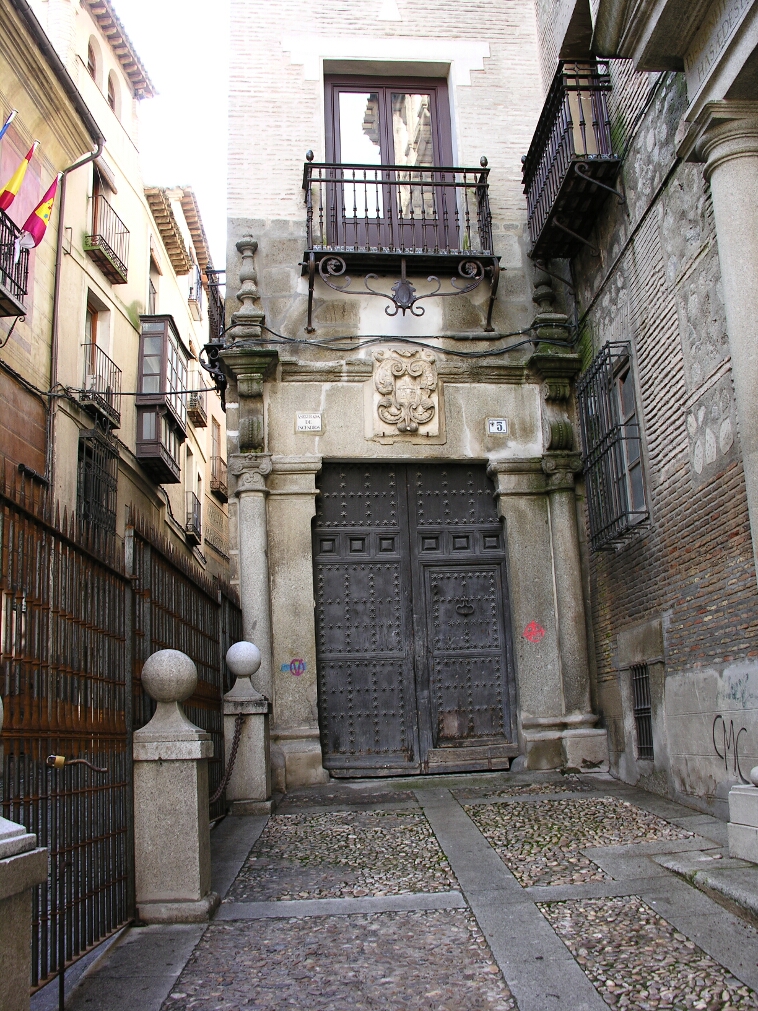
This was the prison of the Highway Patrol, back under Ferdinand and
Isabella. When this organisation was abolished in the 18th Century, the
building became the kind of inn where you could stay.
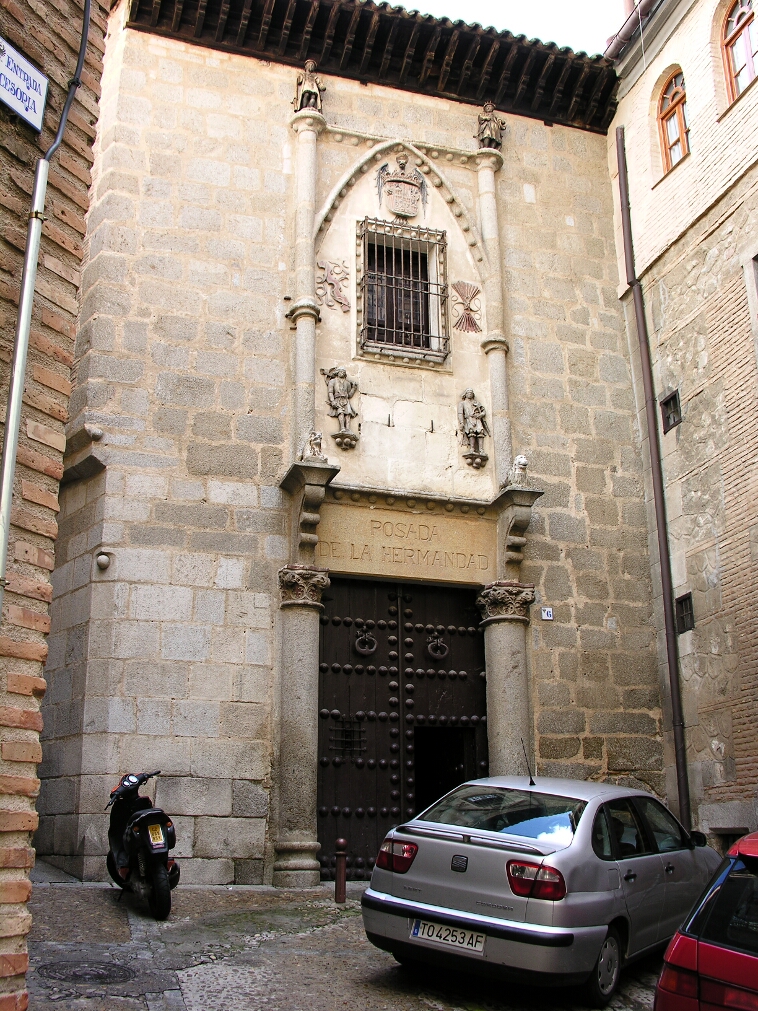
The town hall (no doubt restored after the civil war) is much more modern
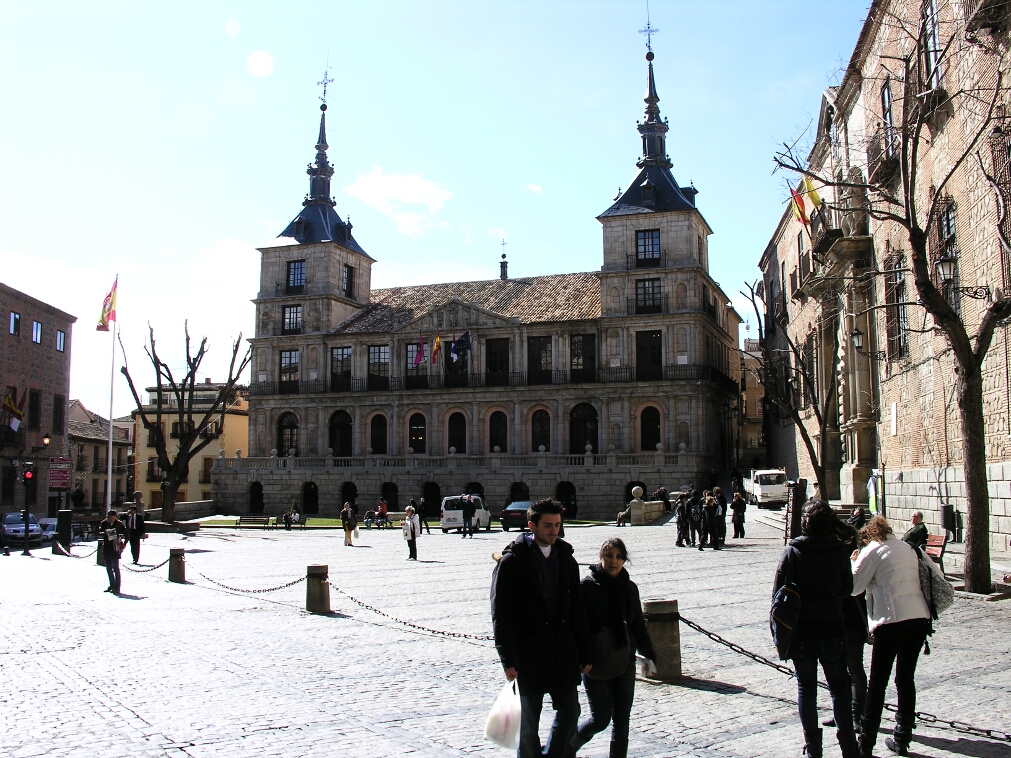
This is the third of the medieval synagogues still existing in Spain. It
was built around the middle of the 14th century by Pedro the Cruel's
treasurer. That was a dangerous job - after "losing favour" with the king, he
died in prison. Probably fell down the steps. After the expulsion, the
building became a religious hospital, then a church. It became a national
monument in 1877, and is now the museum of Sephardic Culture. The roof is
beautiful polychrome woodwork:
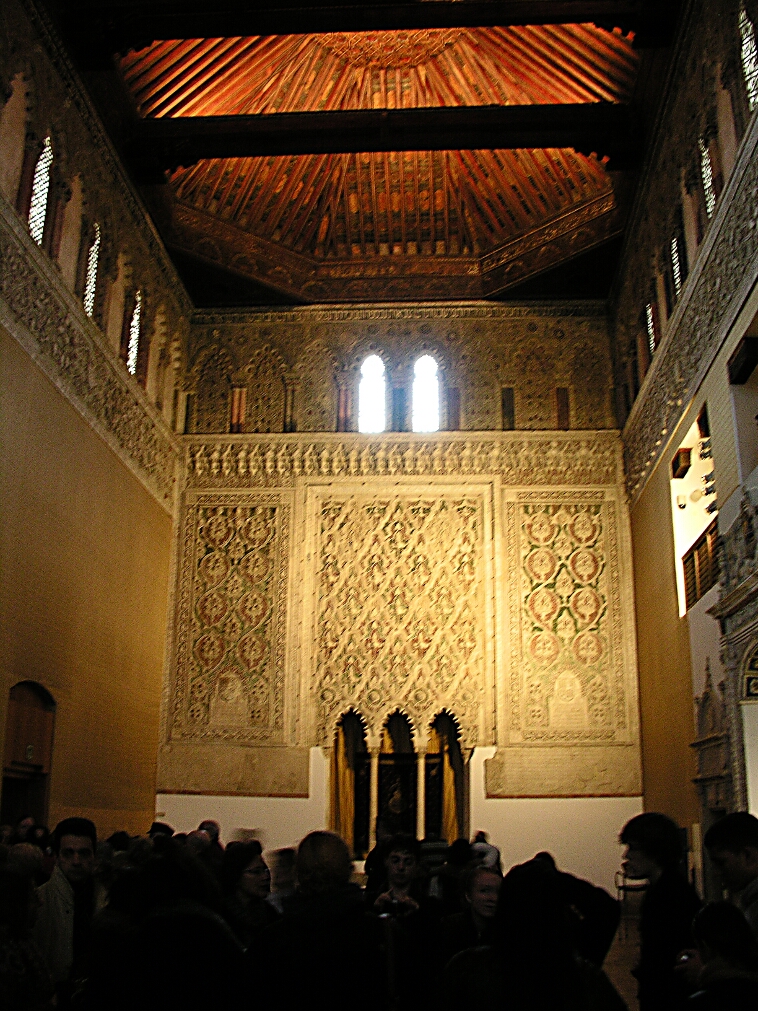
The walls are covered with Nasrid style plaster work. You have to look hard
to tell whether you are in a church, a mosque, or a synagogue.
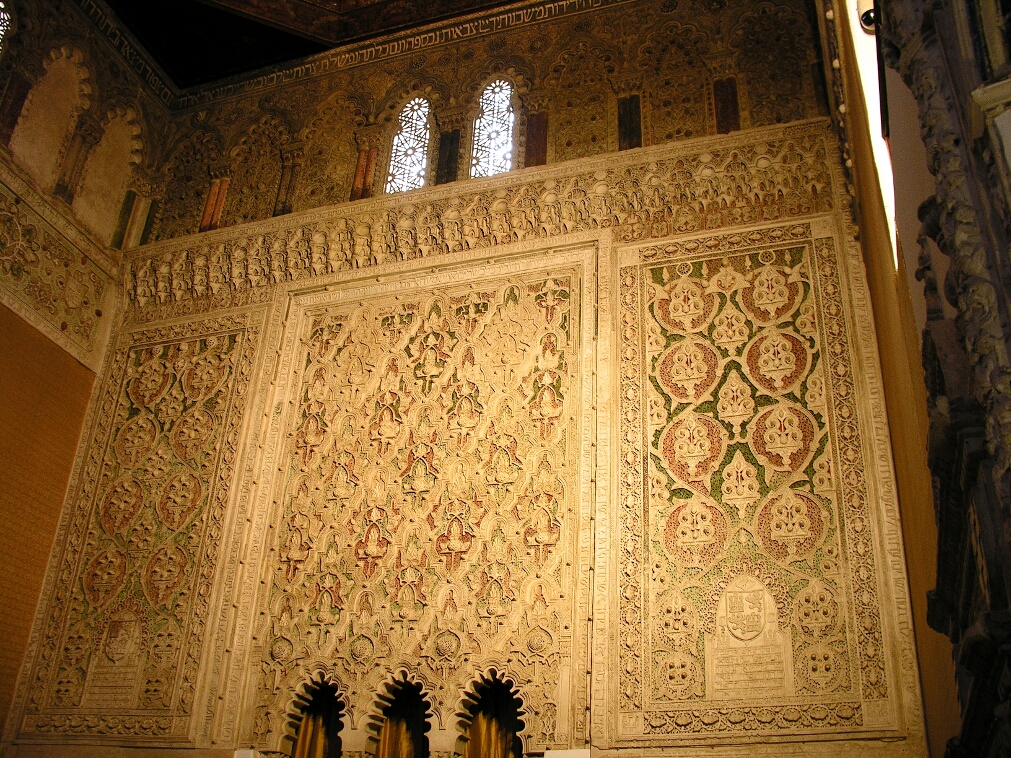
Amid all the hoop-la about the Moors, the Jews, and the
reconqistadores, the Visigoths are rather marginalised by Spanish
museums. This is less the case in Toledo, where the 13th century
mudéjar church of San Román houses an exhibition of grave
goods from the 6th to 8th centuries
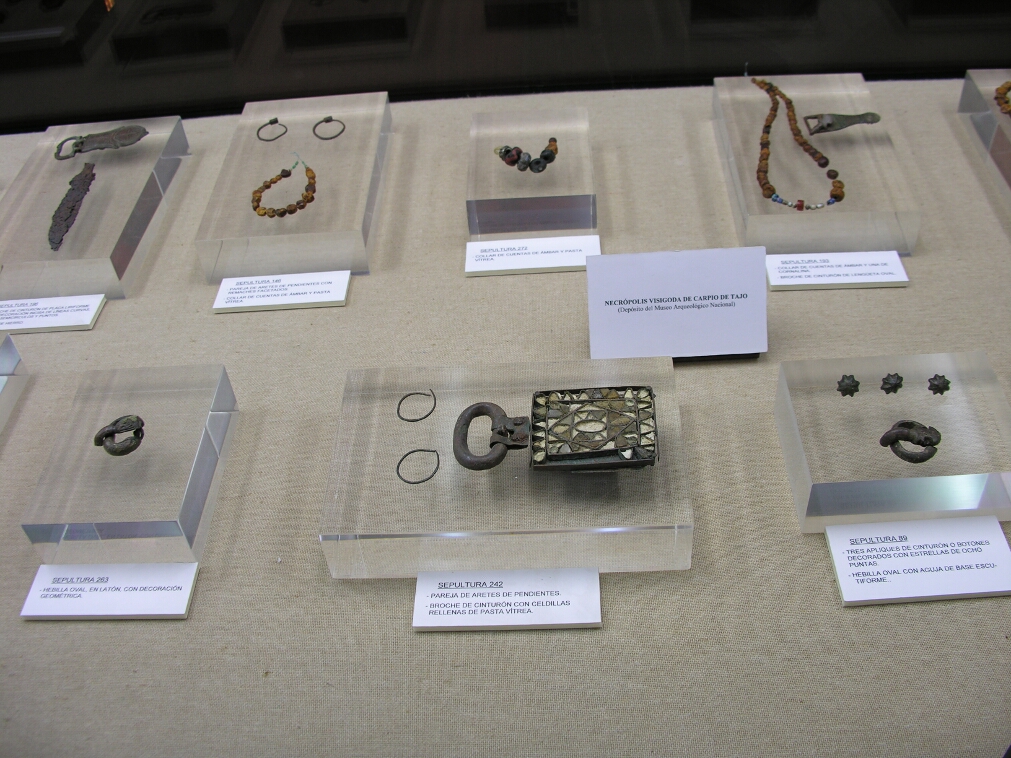
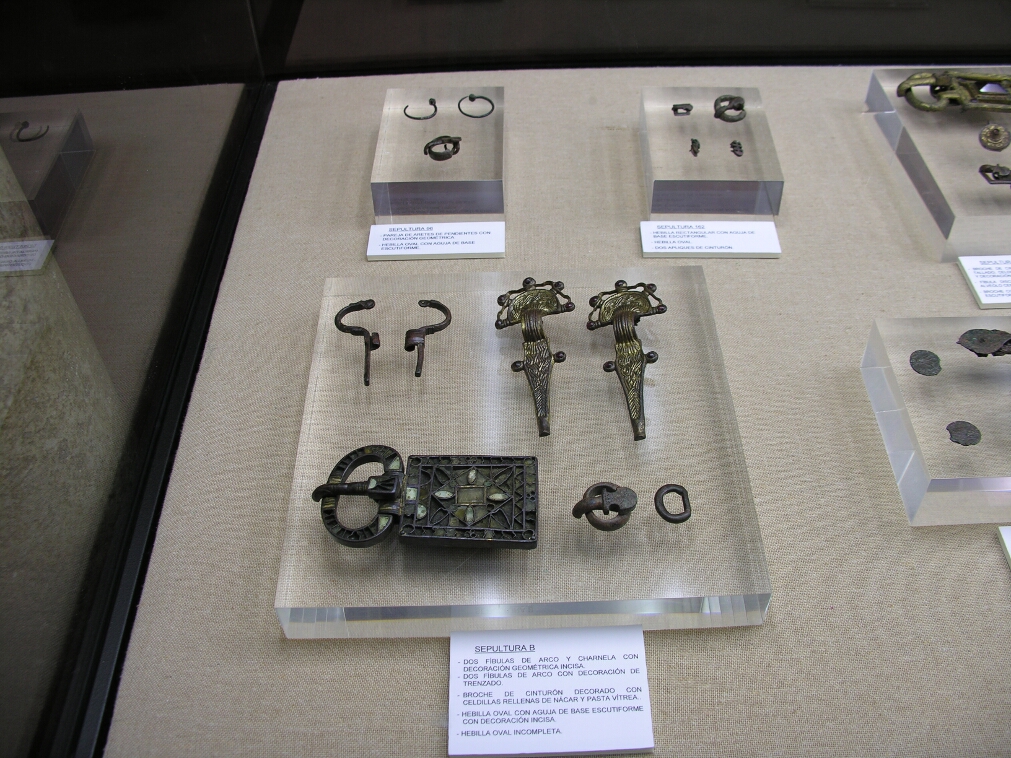
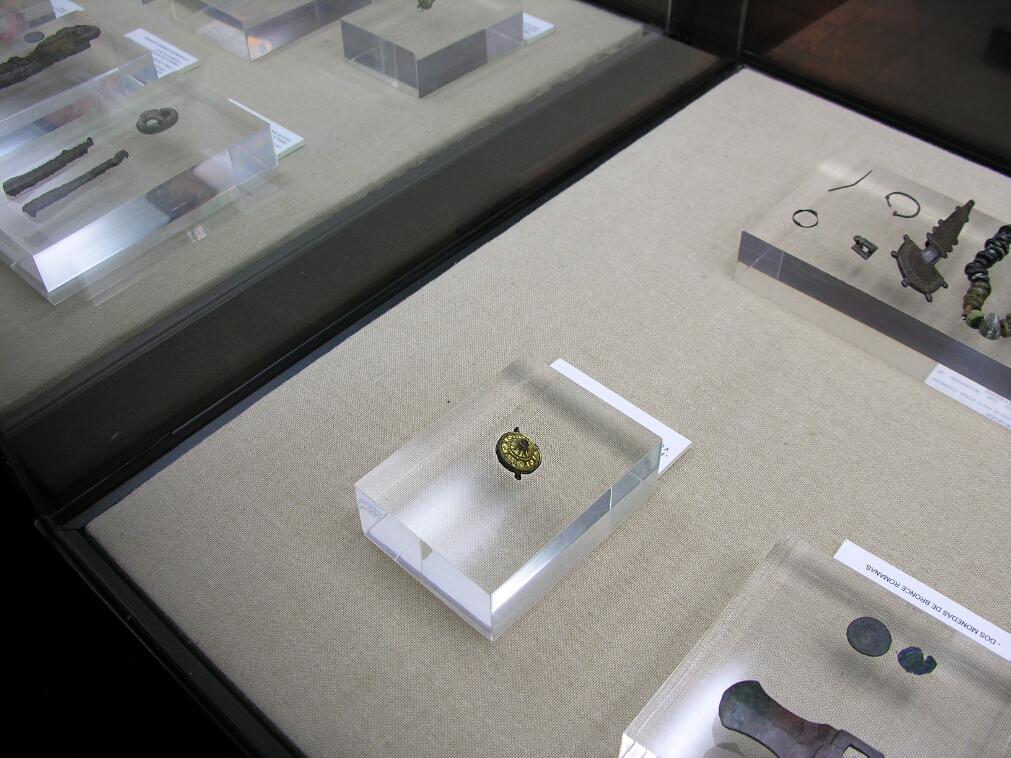
The quality of the metalwork seems less fine that the contemporary Lombard
treasures at Cividale di Friuli, except perhaps for these (replica) crowns
from the Guarrazar
treasure.
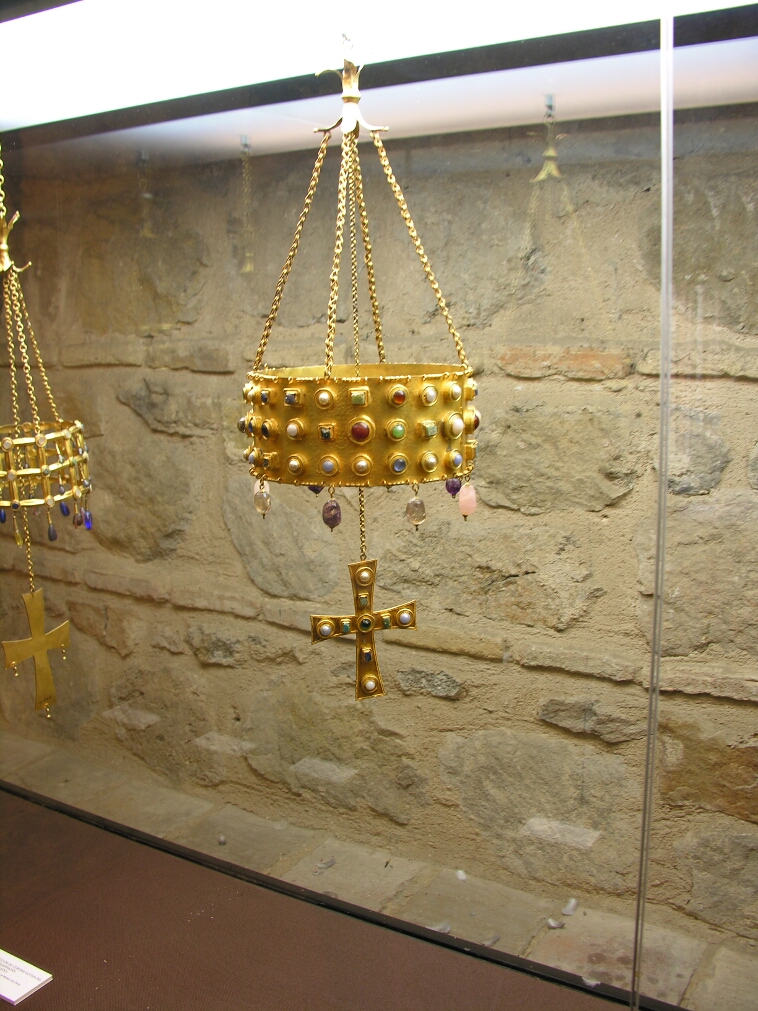
There is a cast of a Visigothic sarcophagus, too:
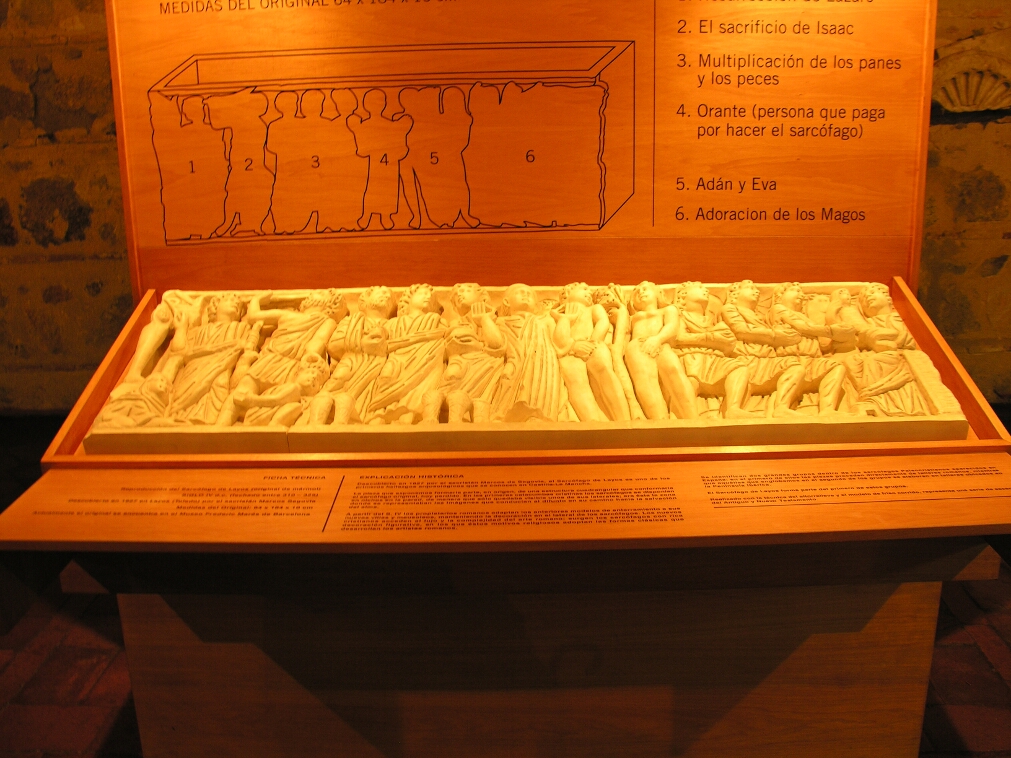
The church itself has many vestiges of its origins. The horseshoe arches
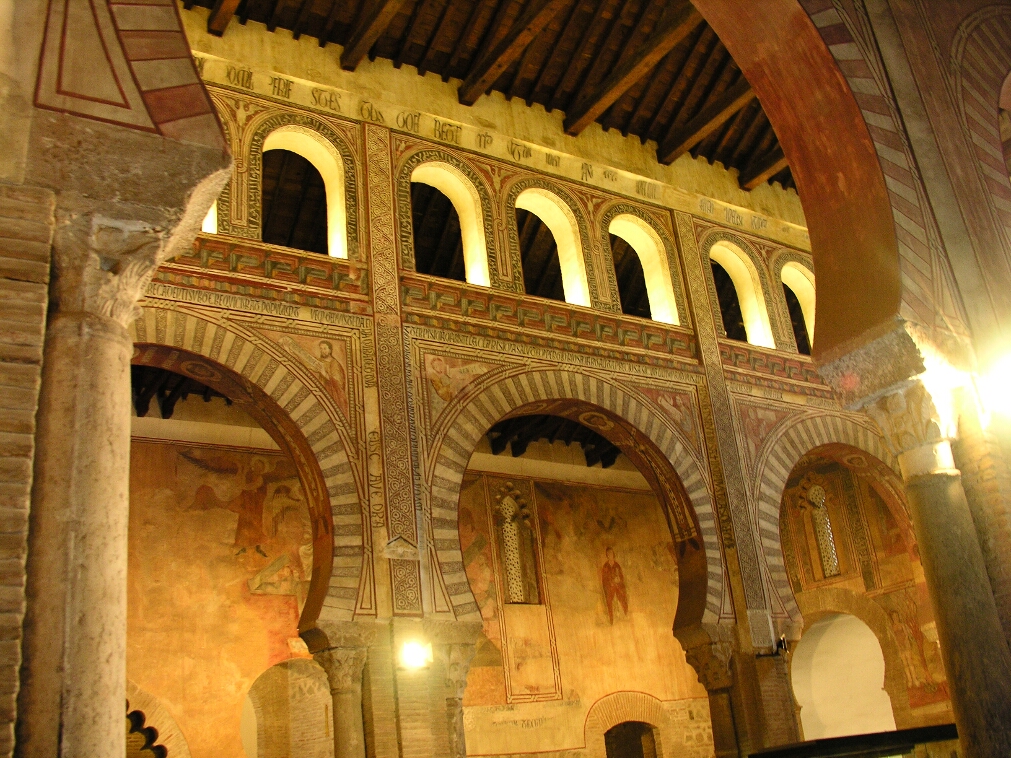
and frescoes, like this picture of the dead rising for the last judgement:
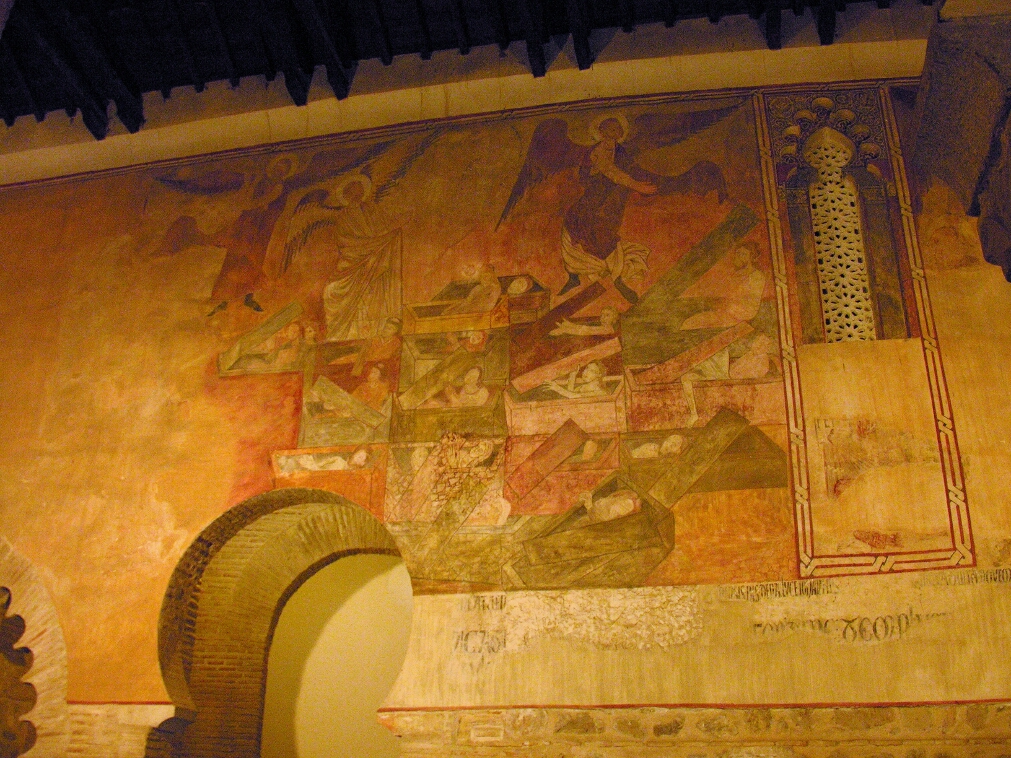
Always with the distinctly arabic shapes
